

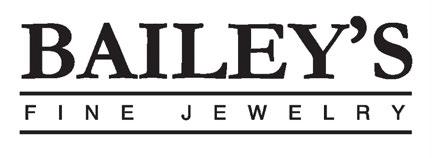

JOHNSON LEXUS OF RALEIGH
JOHNSON LEXUS OF DURHAM AT SOUTHPOINT


Since 1930. Trusted for Generations.










Since 1930. Trusted for Generations.



The Triangle Parade of Homes celebrates exceptional design—and so do we. As a proud sponsor, Green Front Furniture invites you to explore our curated collections—crafted for the way you live, designed for the way you dream. Visit our Raleigh showroom and come to look and leave inspired.
Visit 250+ homes on the Triangle Parade October 4-5, 10-12 & 17-19 Noon to 5:00 p.m.




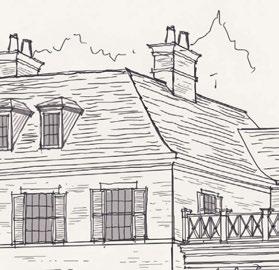









We focus on a complete outdoor approach that is tailored to your individual lifestyle and design preferences. Using the best building practices and materials we create incredible spaces that are made just for you, our client.
Get a quote for your pool project: (984) 788-5933



61 October in the Family Cemetery by Maureen Sherbondy illustration by Daniel Headen 62 Relational Living
A contemporary home with an open-door policy by Addie Ladner photography by Trey Thomas 72 Fertile Soil
A barren former tobacco farm blooms under careful hands by Helen Yoest photography by Juli Leonard
80 Tradition & Tones
A historic home is filled with family treasures in a subtle palette by Ayn-Monique Klahre photography by Abigail Jackson
88 Beneath the Surface Painter Michele Yellin by Colony Little photography by Joshua Steadman




Set on the coast of North Carolina, Camp Sea Gull and Camp Seafarer are premier overnight camps offering sailing, powerboating, aquatics, traditional camp activities and more—all in a safe, fun environment where campers discover confidence, build independence and grow lifelong friendships.
Ages 6 - 16
One, two & four-week sessions
Scan to RSVP for one of our Virtual Information Nights Oct. 7 and Nov. 2
OPEN REGISTRATION Begins November 6, 2025

A scene from our WINnovation event in September. Learn more about it on page 97.

Last year, as my coworker Cristina and I visited one of the new builds on the Triangle Parade of Homes for a cocktail party, we helped ourselves to a house tour. (I mean, that is the point, right?) Walking through this home, what struck me is how it truly checked all the boxes for modern-day living, from the generous island in the kitchen to the main-floor primary suite to the lovely, enclosed entertaining porch. I found myself lingering in the closet, a roomy space with his-and-hers hanging rods and many, many shoe shelves.
It had me trying to recall the last time I had a closet of my own. I’m pretty sure it was in 2007, before my now-husband and I moved in together. The first apartment we shared was in a renovated prewar building. Our narrow, shared walkin closet had clearly been retrofitted into our one-bedroom. It was only “walk-in” by definition, as you had to turn sideways and shimmy in. But we crammed a lot in there, no complaints! Any off-season clothes went into a storage area in the building’s basement, the seasonal wardrobe exchange a biannual ritual.
Our next apartment was inside a townhouse of the same era, a floor-through with a hall closet that I soon shared with one daughter, then a second. Little by little, my shoe area filled with dress-up clothes; my uppermost shelves with off-season bedding and luggage. I didn’t mind, really; I loved seeing the closet evolve with our needs, and the make-itwork challenge of editing down my own wardrobe to fit into the remaining space.
(And yes — I still had a bin of clothes in storage, this time in a rental facility with much of our college memorabilia and holiday decor.)
When we moved here, to a Victorianera home in Oakwood, I found myself sharing the closet that connected our room with our daughters’. This home was built back when people used wardrobes for clothing storage; our closet had been created sometime in the ensuing 100 years by knocking down a wall between these two spaces. But sharing with the girls was kind of cute. Their dresses were so small that they didn’t take up much space, and it gave me a reason to peek in on them at night. Plus, we finally had a basement of our own, so the wardrobe exchange was easier than ever.
Recently, we were able to add another bedroom to the house, which gave us the opportunity to create some 21st-century storage. But once again, Josh and I found ourselves choosing to share a modest closet — by today’s standards, anyway. Turns out, I like the ritual of turning my closet over for the seasons; the curatorial challenge of having a limited space. (When I’m tempted to buy new hangers, I force myself to do an edit instead.)
And it jives with one of my larger life philosophies: be happy with enough, rather than wanting more.

Ayn-Monique Klahre Editor





OCTOBER 2025
PUBLISHER
DAVID WORONOFF
EDITORIAL
Editor
AYN-MONIQUE KLAHRE ayn-monique@waltermagazine.com
Creative Director
LAURA PETRIDES WALL laura@waltermagazine.com
Associate Editor
ADDIE LADNER addie@waltermagazine.com
Contributing Poetry Editor
Jaki Shelton Green
Contributing Copy Editor Finn Cohen
Contributing Writers
Catherine Currin, Jim Dodson, Mike Dunn, Susanna Klingenberg, Maneesha Lassiter, Colony Little, David Menconi, Joe Miller, Liza Roberts, Maureen Sherbondy, Helen Yoest
Contributing Photographers
John Gessner, John Hansen, Abigail Jackson, Bob Karp, Juli Leonard, Taylor McDonald, Bryan Regan, Joshua Steadman, Trey Thomas
Contributing Illustrators
Daniel Headen, Gerry O’Neill
BUSINESS
Advertising Sales Manager JULIE NICKENS julie@waltermagazine.com
Senior Account Executive & Operations CRISTINA BAKER cristina@waltermagazine.com
Finance HENRY HOGAN 910-693-2497
Distribution JAMES KAY
Owners
JACK ANDREWS, FRANK DANIELS III, DAVID WORONOFF In memoriam FRANK DANIELS JR.
GENERAL Inquiries
WALTER OFFICE 984-286-0928 info@waltermagazine.com
Address all correspondence to: WALTER magazine 421 Fayetteville Street, Suite 104 Raleigh, N.C. 27601
WALTER is available by paid subscriptions for $36 a year in the United States, as well as select rack and advertiser locations throughout the Triangle. Subscribe online at waltermagazine.com/subscribe
For subscription and customer service inquiries, please email us at customerservice@waltermagazine.com or call 818-286-3118. WALTER does not accept unsolicited manuscripts. Please contact Ayn-Monique Klahre at ayn-monique@waltermagazine.com for freelance guidelines.
© WALTER magazine. All rights reserved. No part of this publication may be reproduced in any form without the express written consent of the copyright owner. Published 12 times a year by The Pilot LLC.



Terms and Conditions: $300 off any order of $1198 or more,$200 off any order of $998-$1198 or $100 off any order of $698-$998, on any complete custom closet, garage,or home office unit. Not valid with any other offer. Freeinstallation with any complete unit order of $600 or more. With incoming order, at time of purchase only. For a limited time SPECIAL FINANCING for 18 months *with approved credit* Expires in 90 days. Offer not valid in all regions.







MAUREEN SHERBONDY / POET
Maureen Sherbondy’s forthcoming book is The Body Remembers (Unsolicited Press, October). Her work has appeared in Southern Humanities Review, New York Quarterly, Calyx and many other journals. She lives in Durham.
“On a recent visit to a cemetery in Canandaigua, New York, where my grandparents are both buried, I noticed that many family friends have gravestones right near my deceased relatives. I imagine that they are all still in conversation even after life. This thought brings me such joy and peace.” Learn more about her work at maureensherbondy.com.

TREY THOMAS / PHOTOGRAPHER
Trey Thomas has been photographing architecture and interior design for 13 years and feels lucky to be in a place with such incredible designers making their mark. “MontgomeryChoi nailed the indoor-outdoor living concept with this barn-style home. Tucked beneath the trees, the architecture almost dissolves into the landscape — like the forest itself is part of the walls and roof. It’s a space where kids can climb trees one moment and wander inside for snacks the next without losing that connection to nature.”

DANIEL HEADEN / ILLUSTRATOR
Daniel Headen is a freelance illustrator in the Triangle who concentrates in portraiture and cover art as a means to be a better visual communicator not just for himself, but for others as well. “Maureen’s ‘October in the Family Cemetery’ is such a touching poem, and what a pleasure it was to illustrate around her immersive writing.”

SUSANNA KLINGENBERG / WRITER
Susanna Klingenberg is a freelance writer and editor for environmental researchers. When she’s not chasing a story and helping scholars polish their prose, she’s likely curled up with a book or exploring Raleigh with her kids. It was while exploring the grounds of Mordecai House that she first encountered the community she writes about this month, the Triangle Shape Note singers, who gather in St. Mark’s Chapel. “When I heard the flood of haunting, joyful music that day, I immediately wanted to know more. Turns out the music was just the tip of the iceberg! The real story here is about creating a deliberately analog space for singing in community.”
We love to hear from you!
“The WALTER issue is beautiful in every way — every article and photo is meaningful, enlightening and fun! I am honored and humbled to be involved. Thank you.”
— Jane Preyer, on the September issue
“Thank you so much for featuring us. Having WALTER’s support means more than ever right now as we work to amplify our voice and connect with more people in the community.”
— Katie Lowek, on “THe Million Diaper Mark”

Dave Rogers took this 2017 photo of David Tingen.
“David [Tingen] is a wealth of Raleigh knowledge, especially for anyone who wants to understand beer and spirits in Wake County and North Carolina. I am so glad to someone has picked up his story!”
— Dave Rogers, on “Glass Act”
“Goodness is bountiful, but we must practice the eyesight to see it. Thank you for showing the goodness of the world!”
Amal Kassir, on the September issue




@waltermagazine www.waltermagazine.com


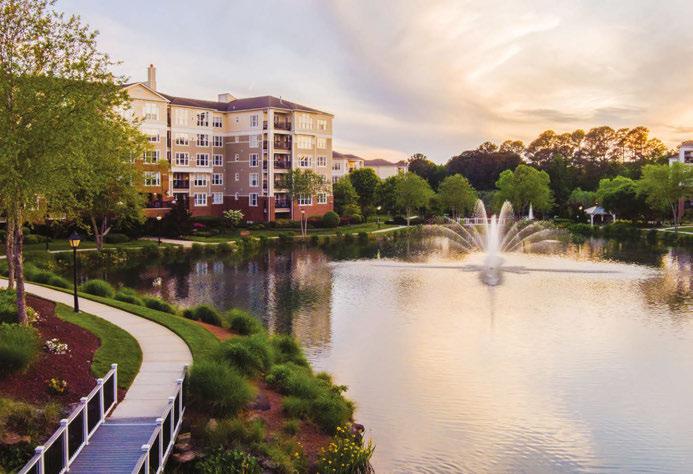
Imagine a future surrounded by the natural beauty of a 44-acre campus, all within a premier Life Plan Community. This is the lifestyle waiting for you at The Cypress of Raleigh.
Call today to learn more and take the first step toward your great future by joining our Future Member List.



Start fall off with a bang with Raleigh’s bluegrass fest, home tours, football and, of course, Halloween!




HAVE A VINTAGE HALLOWEEN How many costumes can you come up with just by shopping your closet? For Amy Barnard and Mary Robbins, the answer might be thousands. “With pieces that can speak to every decade — from 1970s-inspired leather cowboy chaps to funky 1990s-era Elton John glasses — Halloween is our favorite!” says Barnard. Of course, the two have an advantage: they’re the owners of TrunkShow, a basement-level treasure trove full of vintage and second-hand clothing, antiques and other oddities from dozens of vendors (1526 Wake Forest Road; trunkshowraleighnc.com). When we asked them to whip up some fun North Carolina-themed outfits, they quickly came back with, from left to right: 1980s NC State sports fan, 1920s-era Pinehurst golfer, 1990s NASCAR fan and 1990s Broughton High School Queen of Hearts. Follow them on Instagram for more inspiration or swing by the store to see what you come up with. — Addie Ladner

WALTER’s list of things to see, do and experience this month
by ADDIE LADNER
Oct. 3 - 4 | Various times
After hosting the International Bluegrass Music Association’s annual conference and street festival since 2013, the City of Raleigh and PineCone decided to continue the tradition with locals. At the inaugural Raleigh Wide Open music festival downtown, enjoy free stages of bluegrass, gospel, R&B and folk music with acts like soul singer Charly Lowry, acoustic bluegrass group Balsam Range and hip-hop artist Sonny Miles. Shop from craft vendors, dance, eat and more at this mostly free community-wide festival celebrating North Carolina’s deep and diverse musical heritage. The excitement starts Thursday with a free concert at The Corner on North Carolina State University’s Centennial Campus’s (Oct. 2, 6 - 9 p.m.; 941 Main Campus Drive), and Friday night will include a ticketed show at Red Hat Amphitheater featuring bluegrass jam band Greensky Bluegrass and rockers JJ Grey & Mofro (from $100). Free with some ticketed shows; downtown Raleigh; raleighwideopen.com

All month | Various times
In Search of Thoreau’s Flowers, an immersive exhibition based on herbaria gathered by famed author and naturalist Henry David Thoreau, is on view at the Gregg Museum of Art + Design. Thoreau was known for his love of

Walden Pond in Massachusetts, which inspired much of his writing and environmental observations, and his pressed plant and flower specimens are normally housed at the Harvard Museum of Natural History. In Search of Thoreau’s Flowers brings his botanical treasures to life through interactive artwork that touches on themes of biodiversity and how humans should interact with it. Local filmmaker Marsha Gordon, scientist Emily Meineke, photographer Leah Sobsey and digital artist Robin Vuchnich have expanded on the exhibit with interactive wall projections, sound and other interpretations of Thoreau’s collection. Free; 1903 Hillsborough Street; gregg. arts.ncsu.edu
Oct. 3 & 4 | 8 p.m.
Conductor
John Gennaro Devlin will lead the North Carolina Symphony through a suite of classical film scores from the Oscarwinning composer John Williams. With recognizable tunes from movies like E.T., Star Wars and JAWS, it’ll be a dazzling evening at Martin Marietta Center for the Performing Arts. $55; 2 E. South Street; ncsymphony.org

All information is accurate as of press time, but please check waltermagazine.com and the event websites for the latest updates.

Oct. 4 | Time TBA
Hut, hut, hike! It’ll be orange versus red at Carter-Finley Stadium when the NC State Wolfpack take on another North Carolina team, Campbell University’s Fighting Camels, in from nearby Buies Creek. Gather a group to tailgate before the game, where you can expect to see fans with appetizing grill set ups, lawn games, ice-cold beverages — and possibly Mr. and Mrs. Wuf mingling with the crowd. From $100; 4600 Trinity Road; gopack.com
Oct. 4 | 9 a.m. - 1 p.m.
Looking for some out-of-the-box inspiration for Halloween this year? Head to Raleigh Little Theatre for its annual costume sale, where they unload pieces from the last year’s worth of productions. Search through their archives of broaches, vintage hats, belts, complete costumes and other theatrical props to build your own unique outfit come Oct. 31. All proceeds benefit this longrunning city-operated theater. Free to shop; 301 Pogue Street; raleighlittletheatre.org
Oct. 9 - 26 | Various times
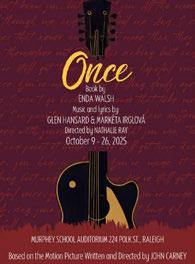
If you were a fan of the ethereal Irish film Once — whose song “Falling Slowly” won an Academy Award in 2007 — then you’ll love this stage performance of the musical by Burning Coal Theatre. Based on the novel and play by Enda Walsh, the story follows an immigrant mother who hopes that her passion and gift for music will afford her family a better life. Along the way, she becomes involved with a talented, charming street musician — despite the complication that
Oct. 4 - 5, 10 - 12 | 12 - 5 p.m.
Get an up-close look at gorgeous new custom homes in Wake, Durham, Orange and Chatham counties, for free! Swoon over cool kitchen hardware or brilliant lighting, find inspiration for an outdoor living project or, if you’re on the market, get to know your future home builder. More than 200 homes will be open for the public to walk through at your own pace. As part of the tour, you can also take advantage of seeing eight remodeled homes on the Remodelers Home Tour, a subcategory of the Parade, between Cary and North Raleigh. Free; various locations; triangleparade.com


they’re both already in committed relationships. From $20; 224 Polk Street; burningcoal.org

MOON OVER MODERNISM
Oct. 11 | 7 a.m. - 11 a.m.
NC Modernist is throwing its fundraising soiree, Moon Over Modernism, to celebrate its 18th anniversary. The cocktail party-style event will be at a noteworthy, newly completed modernist home, the Holton House, situated on 110 acres in North Raleigh. Enjoy live music by jazz group Peter Lamb and







Oct. 11 | 11:30 a.m. - 6:30 p.m.
Experience a day of music, crafts and dancing celebrating the legacy and culture of Indigenous communities in North Carolina. Enjoy a range of performances, including acoustic trio Mark McKinney & Co from Pembroke; Smokey River, a Coharie drum group from Clinton; and tribal dancers Nakya Leviner and Stevie Leviner of the Lumbee Tribe, from Maxton. In addition, the day will feature dance and drum competitions and local vendors. Free; 1030 Richardson Drive; dixpark.org/powwow
the Wolves, elevated hors d’oeuvres, wine and beer by Phillip Zucchino of The Wine Feed and, of course, a tour of the stunning home and property. From $129; address disclosed to ticketed guests; ncmodernist.org
Oct. 15 | 6 - 7 p.m.
As part of the North Carolina Museum of Art’s Mindful Museum event series, Fall Meditative Moments with Art will combine looking introspectively at works in the museum’s collection with seated yoga afterwards. Begin this session by reflecting on selected works that lend themselves to the fall season (think: landscapes, indoor warmth, moody colors), followed by a guided meditation session and gentle flow in the gallery. From $16; 2110 Blue Ridge Road; ncartmuseum.org
Oct. 17 - 19 | Various times
The North Carolina Opera will offer a company premiere of a beloved princess tale to kick off its 2025-2026


season. Written by composer Jules Massenet in the 1800s, Cinderella — or Cindrellon, in his native language — will be performed in French with English subtitles. The show lasts two and a half hours with an intermission. International award-winning opera singer and educator Nicole Cabell will play the title role as we follow her on an enchanting, romantic journey from rags to royalty. From $33; 2 E. South Street; ncopera.org
October 18 | 10 a.m. - 3 p.m.
The Great Raleigh Cleanup is a grassroots nonprofit that organizes group trash pickups, from combing natural
areas like banks of Walnut Creek for bottles and tires to gathering postconcert debris at Red Hat Amphitheater. This month, they are celebrating five years (and nearly 300,000 pounds of trash collected!) with a Backyard Birthday Bash at Coastal Credit Union Amphitheatre. True to its mission, the celebration kicks off with a community cleanup along nearby Rock Quarry and Sunnybrook Roads, followed by a party at the venue’s Backyard VIP Club. There, enjoy tunes from DJ StricklyVybez, drinks, food, prizes and more. Pre-registration is required. Pay what you can; 3801 Rock Quarry Road; raleighcleanup.org
October 16 - 26 | Various times “There’s No Time Like the Fair Time.” That’s the motto for this year’s NC State Fair, an annual event that brings thousands of people from all over the state for 10 days. Enjoy everything from agricultural and livestock displays to classic carnival rides and food to unique-to-North Carolina features like the Village of Yesteryear, which highlights state crafts like blacksmithing and basket weaving. Don’t forget to milk a cow and get a picture with this year’s prize-winning giant pumpkin, both a hit with the littles! From $10; 4285 Trinity Road; ncagr.gov
MIGHTY GIVEBACK
Oct. 18 | 5 p.m.
In 2001, friends Tom Lyon, Phil and Shellie Gruber, Danny Rosin and Skip Mangum got together to create Band Together, a nonprofit that uses the power of live music for good. This year, they’re partnering with United Way Greater Triangle on a goal to raise $1 million for six local nonprofits including Foundation of Hope, Boys and Girls Clubs of Wake and Orange Counties and the National Alliance of Mental Health Wake County, with an emphasis on supporting mental health programs. This Mighty Giveback concert will be a throwback-themed show at Lincoln
Theatre featuring Southern jam band legends Gov’t Mule (fronted by Warren Haynes of Allman Brothers Band), along with Edwin McCain and Young Gun Silver Fox. From $53; 126 E. Cabarrus Street; bandtogethernc.org

Oct. 16 - 19, 25 & 26 |
Various times
Experience wrath, sloth, greed, gluttony, lust, pride and envy, each brought to life through visceral choreography from the Carolina Ballet for the company’s premiere of Seven Deadly Sins. With music by famed New York composer Aaron Severini and choreography by Carolina Ballet creative director Zalman Raffael, it’ll be a tantalizing show. From $38; 2 E. South Street; carolinaballet.com
Oct. 19 | 2 - 5 p.m.
Test out your Halloween costumes at a trick-or-treating extravaganza along Hillsborough Street. This spooky, family-friendly afternoon will include magic-themed games and a bubbling cauldron at Compiegne Park, candy stations in front of the Welcome to Hillsborough Street mural and a trickor-treat bag and exclusive comic book by Jake Berlin at The Portal (while supplies last). Free; Hillsborough Street between the Pogue and Logan Court intersections; hillsboroughstreet.org


Campbell University invests in each student. We prepare each one to make a life, to make a living and to make a difference. Our students are welcomed into an inclusive community of family, and mentored to become leaders who will impact the world. Inspired by our faith and belief in the power of education, we encourage each student to grow academically, spiritually and socially through the world of opportunities that surround them. campbell.edu
Oct. 21 | 8 - 11:30 p.m.
All skill levels are welcome at this lively jam session at Neptunes Parlour, part of a free series from Oak City Music and the North Carolina Department of Cultural and Natural Resources’ Come Hear NC program. This month, jazz band Gaston Reggio Group will headline the session, and guests are encouraged to bring their own instruments (or vocals!) to participate in some fun jazz improvisation. Hot Jamaican food will be available for purchase. Free; 14 W. Martin Street; oakcitymusic.com
Oct. 24 | 4 - 7 p.m.
Head to Bond Park for a pumpkinthemed afternoon with live music, food trucks and craft activities as you get in position to see Cary’s annual Pumpkin Flotilla. When the sun sets,

an array of jack-o-lanterns will set off on the water for a silly and spooky display. The pumpkins will remain on the lake and, weather permitting, be relit the next day for extended viewing opportunities. To contribute your own jack-o-lantern, drop it off the afternoon before (just check the website first for guidelines, which specify the size and weight that will work on the flotilla platforms). Free; 801 High House Road Cary; carync.gov




Oct. 24 | 7:30 p.m.
The North Carolina Master Chorale will present Gates of Justice, a performance of two powerful works that explore spirituality and human dignity. The first is “Gates of Justice,” a piece by late jazz and composer Dave Brubeck with lyrics that include Scripture and writings by the Rev. Dr. Martin Luther King Jr. It’s paired with “Credo” by Margaret Bonds, one of the first Black composers to gain recognition in the United States, which offers a musical interpretation of W.E.B. DuBois’s civilrights manifesto of the same name.
“These works respond powerfully to the ongoing struggle for racial and social justice, offering messages of hope, reconciliation and belief in human potential through bold musical voices,” says music director Alfred E. Sturgis. $35; St. Francis of Assisi Church, 11401 Leesville Road; ncmasterchorale.org



We’re excited to unveil The Clubhouse, the stunning centerpiece of our reimagined campus, featuring beautifully designed one-, two-, and three-bedroom penthouse residences. It’s senior living reimagined –where every detail is tailored to elevate your expectations.






Just steps from both bustling Glenwood South and the heart of downtown, the newish development Smoky Hollow has slowly been filling out with restaurants and bars — enough to be a foodie destination on its own (and with more on the horizon).
From BBQ to tapas, craft cocktails to a classic diner milkshake, there are a breadth of options that reflect a community feel within the walkable, welcoming space. “I fell in love with Smoky Hollow almost immediately,” says Tyler Helikson, co-owner of Madre and Moon Room. “The pedestrian-only thoroughfare felt very European to me — I could envision people spilling out of one restaurant into the next, like you see in some of my favorite cities.”
Read on for five spots in Smoky Hollow to add to your list.
A beloved North Carolina establishment known for serving up craft cocktails in Chapel Hill and Charlotte arrived at Smoky Hollow earlier this year. Within The Crunkleton’s dimly lit, sleek space, take your pick from the wall of spirits with more than 100 options — or enjoy the bartender’s take on a classic cocktail like a Paper Plane or Sazerac. This Crunkleton outlet also boasts a decadent menu, including charred oysters, various steaks and a Wagyu beef burger cooked over an open flame, plus sides like a gooey mac and cheese, shishito peppers and Brussels sprouts. thecrunkleton.com
One of Smoky Hollow’s earliest tenants, Madre has a sprawling restaurant, bar and patio where they serve up small
plates, cocktails and snap-worthy spaces. Industry veterans including Helikson (of Happy + Hale fame) and Bryan Costello, who’s known for designing Heights House Hotel, opened Madre in 2023. The Euro-inspired space serves tapas-style items with Spanish influences and nods to the South, like a pan con tomate done with local produce and a spicy and crispy Calabrian fried chicken. While Madre’s open and airy space is one of the largest in Smoky Hollow, it also has pockets to enjoy a lively nightcap or an intimate dinner with friends. madreraleigh.com
Midwood Smokehouse brings Texas barbecue traditions to North Carolina. Smoky Hollow is Midwood’s first location in the Triangle but its seventh

across the Carolinas. Pitmaster Matthew Berry, an NC State alum, serves barbecue staples — like smoked brisket, wings and cornbread — while also playing with Tex-Mex flair. Crowd favorites include jalapeño cheddar sausage, smoked meat tacos and a creamy queso perfect for sharing. midwoodsmokehouse.com
Another brainchild of Helikson, Costello and other industry pros, Moon Room started out as a draft cocktail concept that has expanded to include beer, wine and a full cocktail bar. The moody jazz bar designed by Costello offers live performances, an open jazz night, DJ sessions and vinyl nights. “We wanted to open a room we all loved hanging out in. For us that meant great music, great


cocktails, great lighting, great people,” says Costello. For more talking than listening, there’s the lively patio; and if you’re worried you’ll get lost in the music, be sure to snap a photo in the space’s photo booth, the Memory Machine. moonroomraleigh.com
For Raleighites craving traditional diner fare, Tucker Street Diner is a go-to. From the folks of Apex’s Peak City Diner, the restaurant has a retro soda-shop feel with a black-and-white checkered floor and shiny chairs with vinyl upholstery. On the menu, find hand-spun milkshakes, made-to-order “diner chips” and all-day breakfast — plus cappuccinos, lattes and a custom coffee roast from Peak City Coffee. instagram.com/tuckerstreetdiner














In addition to the full-service outlets, you can grab a little something from these spots.
You don’t need to take a class to justify a healthful smoothie at this wellness spot. Their blends are packed full of healthy ingredients like ginger, turmeric and magnesium, with a range of flavor options from banana and peanut butter to mint or mango. doseyogastudios.com











Yes, this is a bakery (and spa!) for dogs. If your pup is celebrating, swing by for a cake — or for everyday, consider a cookie or a scoop of pup ice cream made from drool-worthy ingredients like dried salmon, anchovies, dehydrated carne asada and beef cheek. hauseofdogsraleigh.com
A luxury, rental life plan community, Hayes Barton Place offers residents exceptional amenities and an unparalleled lifestyle in one of Raleigh’s most sought-after locations. With more than 85% of our residences reserved, now is the time to discover the benefits of Hayes Barton Place.




Part popsicle outlet, part ice cream bar, Morelia offers homemade Mexican paleta flavors like raspberry chocolate, strawberry milk shake and mango sorbet. paletasmorelia.com
This sweet spot has something for everyone including milk teas, fruit teas and unique rolled ice cream combos — plus fun floats (ice cream on top of chilled teas) in flavors like Matcha, Oolong and Mocha. milklabcafe.com


VISIT NORTH CAROLINA’S LARGEST OPEN HOUSE
OCTOBER 4-5, 10-12 and 17-19



















































































































































































































10 WELCOME TO THE PARADE
Celebrating 60 years of the Triangle Parade of Homes

14 PARADE OF HOMES MAP
Use this official guide to help you plan your route
16 LIGHTING FOR EVERY STYLE
Bright ideas to inspire every home
20
WILD WALLPAPER
18 TILES, TILES, TILES
Cover image is a 2025 Parade home by ICG Homes.
30 THE CLOSING OPERATION: Coming Home 24 16
Parade homes embracing color and pattern
Bold prints transform walls into works of art
23
WORLD OF WELLNESS
Incorporating self-care with saunas, spas, and more
24 BYE-BYE, BEIGE
Warm, relaxing watercolors are having a big moment
27 GREEN TRANSITIONS
These Parade homes seamlessly move from indoor to outdoor






































































































































































The Triangle’s annual home tour event continues the beloved tradition first started in 1966.
By Rachel Simon

The year was 1966, and it was an exciting time to be in Raleigh.
IBM announced its move to RTP, creating hundreds of jobs and launching the city’s tech boom; pop acts like the Beach Boys and the Rolling Stones drew massive crowds at Dorton Arena and Reynolds Coliseum; and North Hills Mall saw its very first shoppers. One other major change? The start of the Triangle Parade of Homes, the beloved local home tour now entering its 60th year.
During the first fall Parade, just 14 houses were available to view around northern Raleigh and Cary; in 2025, there are upwards of 200, with the map spanning as far as Pittsboro and Angier. And while the first few years allowed only a handful of people to visit each house at once, today’s Parade attendees often jockey for the best views alongside dozens or even hundreds of others.
“I don’t think any of us had any idea what it would become, by any stretch of the imagination,” says Charles McLaurin, the former president of the Home Builders Association (HBA) of Raleigh-Wake County and a key figure in Parade history. That first year in ‘66, he recalls, the homes featured in the Parade (including one he’d built in Cary’s Stoneybrook Estates) were shown off by neighborhood women “dressed up in their finest,” with an ad in The News & Observer helping to spread word of the event. Initial attendance was slow, but by the second weekend, the homes were “overwhelmed” with visitors interested in seeing the beautiful properties, says McLaurin.
Over the next few decades, as Raleigh’s population skyrocketed and thousands of new homes came onto the market, the Parade ballooned into an event closer to what it’s known as today — albeit with much lower prices. Jim Allen, founder of the Jim Allen Group, remembers showcasing 11 houses in the 1981 Parade that all cost well under $150,000. Tours of the stylish yet affordable homes around

“I don’t think any of us had any idea what it would become, by any stretch of the imagination.” – Charles McLaurin
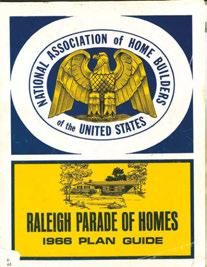














Utilize great tools such as Map Your Tour, Builder Profiles, and enhanced search functionality so you can easily and seamlessly plan your route. Sort by builder, price or location to plan your Parade route. Visit www. TriangleParadeofHomes.com for the most up-to-date information!

The official Parade of Homes Book has details on more than 215 incredible homes that are open to tour for free in the Triangle area! Use the directories to find the city or builder you’re looking for in your new home. Then, read up on all the details these homes have to offer — number of bedrooms, bathrooms, price and home features — before heading on your tour.
Connected with us on social media to follow along and get all the latest updates and events happening across the Tour. Stay tuned because we’ve partnered with Green Front Furniture to give away a $1,000 gift card to shop at its store. Happy touring!
that time were so popular, he tells WALTER, that builders were forced to extend visiting hours late into the night to accommodate all the interested viewers. “It was like going to the State Fair,” Allen recalls.
This year’s Parade will span across three busy weekends: October 4-5, October 10-12, and October 17-19. Visitors can check out the homes from 12-5 p.m. during each day and take in the unique looks and features of each participating residence. For builders and designers, the Parade offers an unmissable opportunity to display their most impressive just-built properties, while attendees get a chance to view trending styles, compare amenities, and even consider purchasing new homes themselves.
“The Parade is a win for this entire industry and market,” says Allen. “There are people all over the country every year that come just to see what we’re gonna do.”
If you plan to be one of the 2025 attendees, you won’t be disappointed. This year’s homes were constructed by 84 builders and have much to highlight, with some of the pricier options including enviable features like saunas, cold plunges, and heated pools. “We are excited to show off all the high-tech and high-end features to all Parade viewers,” says builder Grayson Vick of Sage Built.
But even the more modest homes on the Parade have plenty to offer, as they’ve all been meticulously crafted to appeal to prospective buyers with a range of needs and desires. Says builder Matt Riley of New Home, Inc: “What excites me most is showing people how thoughtful design and smart planning can make a huge impact without the need for a multi-million-dollar budget.”
The 25th Anniversary of the Remodelers Home Tour will run Saturday, October 11th and Sunday, October 12th from noon until 5 p.m. More information available at remodelershometour.com.
Whatever your budget or style preference may be (or even if you’re simply there to browse), you’re certain to enjoy participating in the 2025 Parade of Homes.



























The 2025 Parade of Homes is a scattered-site tour of 219 new homes. With homes in all price ranges, the Parade is the perfect source of anyone planning to buy a new home now or in the future - or for seeing the newest trends in the Triangle building industry





WHEN October 4-5, 10-12 & 17-19, 12pm-5pm

Most homes are in Wake County. For driving directions, follow the route outlined on each house page or visit TriangleParadeofHomes.com to set up your own tour.
October 4-5, 10-12 & 17-19, 12pm-5pm
The Parade of Homes is FREE.
Most homes are in Wake County. For driving directions, follow the route outlined on each house page or visit TriangleParadeofHomes.com to set up your own tour.
The Parade of Homes is FREE.
Look for these blue pins to show where the entries in the 2025 Remodelers Home Tour are located. These homes are open one weekend only - October 11-12 from 12pm-5pm. For more information on these entries, see page 258.
The Remodelers Home Tour is FREE.
WHEN
OCTOBER 11-12 ONLY, 12pm-5pm
COST
The Remodelers Home Tour is FREE.
The designs shown within these pages are subject to copyright protection. Use of any part of these designs is prohibited without the written consent of the owner.
You’ll come across many different styles of lighting on the Parade of Homes this year, including the unique and stunning options showcased below.





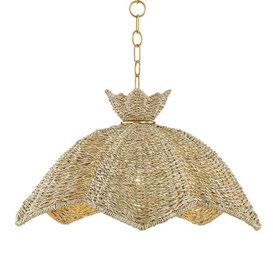

Painting a wall or putting up wallpaper isn’t the only way to add some fun pattern into a home. On the Parade this year, you’ll find plenty of houses that feature colorful printed tiles throughout the properties. The vivid, eye-catching designs are just as fun to spot on a tour as they are to see every day.
Tuscany Construction Group #124










Terms and Conditions: $300 off any order of $1198 or more,$200 off any order of $998-$1198 or $100 off any order of $698-$998, on any complete custom closet, garage,or home office unit. Not valid with any other offer. Freeinstallation with any complete unit order of $600 or more.With incoming order, at time of purchase only. SPECIAL FINANCING For 12 months! Expires in 90 days. Offer not valid in all regions.
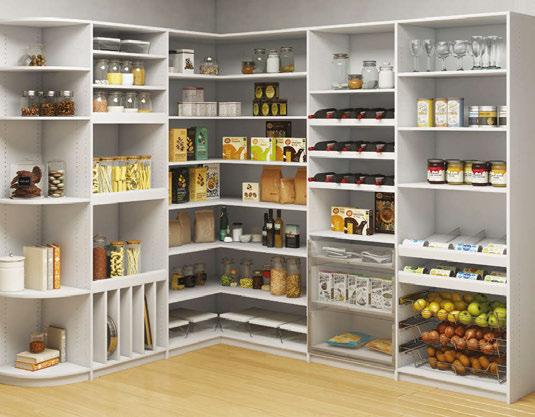





Bold prints transform walls into works of art
Discover the fun and vivid patterns lining walls across the Parade this year. You’ll never get tired of looking at these beautiful prints, lining everything from kitchens to guest rooms.




















Incorporating luxury with saunas, spas, and more

Self-care has never been more in style, and the trend can be seen firsthand when you check out some of the truly luxurious homes on the Parade this year. Step inside and you’ll discover bathrooms outfitted with spa-inspired technology — think rainfall showers, soaking tubs, heated floors, and ambient lighting that transforms a simple routine into a restorative ritual. Beyond the bath, find home outfitted with gyms and therapeutic saunas. These wellness-centric features would make any owner feel cool and comfortable in their already-beautiful space.
Left: Bison Homes (Home #156) blends fitness, relaxation and recovery in this home’s gym, which includes a sauna and cold plunge to create a sanctuary where wellness and design meet. Below: A sculptural tub and spa-like shower by Ken Harvey Homes (Home #145) create the ultimate invitation to slow down and embrace self-care at home.

Warm, relaxing watercolors are having a big moment

For years, beige, grey, and white were the main colors you’d see in homes across America. Now, however, more builders and owners are embracing warm watercolors in everything from paint to furniture to accessories. The beautiful and relaxing hues are a welcome change of pace from the more muted colors of Parades past. Where once the trend leaned heavily toward muted neutrals, today’s entries highlight color as a way to add warmth, individuality, and charm. These hues don’t just update the look of a space — they change the atmosphere, making homes feel more inviting and reflective of the families who live in them.
Left : In this downtown Raleigh home by Boardwalk Building Company (Home #114), smooth blue cabinets make a bold departure from white, proving color is the new neutral. Below: Soft green tones ground the dining room with quiet character, offering a subtle yet striking touch of personality in this McKinley Homes (Home #185) design.



Above: Tri Pointe Homes (Home #33) shows that these hues don't have to only live on your walls, they flow into furniture, textiles and statement pieces that create layered spaces that feel both vibrant and uniquely personal. Below: Awash in a striking shades of blue, this kitchen by Drees Homes (Home #1) proves that bold color infuses personality and creates visual interest, transforming everyday spaces into unforgettable statements.

These Parade homes seamlessly move from indoor to outdoor

When touring the Parade this year, you’ll notice that many of the homes feature spaces that transition smoothly from indoors to outdoors, giving each home an enviable all-season look and feel. There are kitchens that connect straight through to porches, living areas that merge into patios, and more designs meant to encourage seamless transitions for each home’s residents and guests. More builders are embracing layouts that celebrate natural light, fresh air, and easy movement, creating a sense of continuity between interior comforts and exterior beauty. From screened-in porches that feel like an extension of the living room to patios designed for year-round use, these thoughtful touches encourage residents and guests alike to enjoy the best of both worlds — indoors and out.

Below: With seamless transitions from formal living room to outdoor living, this Drees Homes (Home #1) space celebrates both elegance and livability.
Right: Designed for every season, the covered dining and living space by AR Homes - Monterey Bay (Home #137), offers the joy of being outdoors with the ease of protection from the elements.


Right: With interiors that spill gracefully onto outdoor living areas, every occasion feels open, inviting, and seamless in this Toll Brothers (Home #76) home.



On Veterans Day, Operation: Coming Home (OCH) will dedicate Hero Home #29 to U.S. Army Green Beret Sergeant First Class Eddie Kim and his wife. Sergeant Kim was paralyzed during a training exercise at Fort Bragg in December 2024. This ceremony is a chance for the community to come together in gratitude, celebrating his service and sacrifice with the gift of a mortgage-free home. The home is being built by Mungo Homes in partnership with the Home Builders Association of Raleigh-Wake County and the U.S. Veterans Corps.
Located in Renaissance at White Oak in Garner, the home is fully customized to meet the veteran’s needs


based on his injuries and will be 100 percent donated — a lasting gift of gratitude from the community he served.
“Mungo Homes is honored to play a part in Operation: Coming Home alongside the HBA and the U.S. Veterans Corps,” said Adam Speiran, Raleigh Market President for Mungo Homes. “This is an incredible opportunity to give back to those who have served our country and provide them with the American dream of home ownership. It’s the smallest way for us to show our gratitude, and we hope to be part of this program for years to come.”
Founded in 2007 by local veterans and HBA members, OCH began with
a simple mission: to help severely wounded service members achieve the American Dream of homeownership. The first Hero Home, built in 2008 for Sergeant Joey Bozik, a triple amputee injured in Iraq, was fully customized to meet his needs with accessible design features. That groundbreaking marked the start of a legacy that has now touched nearly 30 families.
OCH thrives thanks to the generosity of builders, trade partners, donors, and volunteers who contribute time, labor, and resources. Each home is a tribute to the sacrifice of our military heroes and this community’s way of saying thank you.




Find premium appliances and luxury mattresses crafted to complement your style and enhance your daily moments with ease and elegance.





•
•




































Vultures may look scary, but they play a critical role in our environment
words
and
photography
by MIKE DUNN
October in the Piedmont means cooler nights, the start of fall color and families preparing for some people’s favorite holiday, Halloween. Of course, Halloween is a time for treats, but it’s also a season full of eerie stories and images. I don’t usually think of the natural world as a scary place, but plenty of people associate certain critters with spooky traits — spiders, snakes and bats for starters.
Another local creature that some view as having a ghoulish reputation: vultures. Why are vultures perceived as scary? Perhaps it is because we often associate death with scary scenes, and vultures specialize in making dead things into a diet. Often, when they’re featured in movies, they’re circling above someone in a deso-
late place, waiting for an unkind ending. And to be fair, the vulture’s appearance itself is a little frightening, as it resembles a feathered grim reaper with its dark coloration, naked head and scythe-like bill. In the early 1900s, there were public calls to kill vultures due to fears of them spreading diseases from the dead animals they consumed. But the truth is just the opposite: vultures help stop the spread of disease and reduce numbers of unwanted scavengers like feral dogs and rats by removing animal carcasses from our environment. Some vultures, in fact, have stomach acids 100 times stronger than ours, with a pH similar to your car’s battery acid. This allows them to safely consume decomposing animals and helps neutralize any pathogens they encoun-
ter. Vultures are key members of nature’s “clean-up crew” and play a critical role in helping recycle the nutrients from dead animals back to the soil.
North Carolina has two species of vultures, the black vulture and the turkey vulture. Turkey vultures are larger and dark brown in color, and adults have reddish skin on their heads. (The resemblance to the head of a wild turkey is the origin of their common name.) Black vultures are slightly smaller, with dark gray heads and black feathers.
In flight, turkey vultures are able to soar on their 6-foot wingspan for hours with wings held in a slight V-shape (called a dihedral). To help people tell the difference between the two species I say the turkey vulture has a TV antenna shape to its wing profile. (Of course, I can only say that to people of a certain age, as younger folks have no idea what I am talking about when I say “TV antenna.”) Turkey vultures’ dihedral shape gives them a more stable flight and minimizes the need for flapping, undoubtedly saving them considerable energy. (Author Bernd Heinrich, a professor in Vermont who has written many books on nature, expressed it beautifully: “Vultures… find food by soaring, which has nearly the same metabolic cost as perching — it’s the equivalent of perching in the sky.”) Black vultures tend to flap more and hold their wings almost flat across (similar to many other raptors, like hawks and eagles). They also have a shorter tail and whitish patches at their wing tips when viewed from below.
Black vultures have become much more abundant in our area in recent decades, and studies show they are rapidly expanding their range northward and increasing population numbers. At a carcass, black vultures remind me of scenes from movies showing African Old World vultures (not closely related to their North American cousins) squabbling over a lion kill, with much squawking and wing-flapping as they maneuver for position. I pulled over at a feeding frenzy along the highway a couple of years ago where a group of about 20 black vultures were tearing into a roadkill deer. They were making quick




work of the carcass, and I must admit it was a little difficult to watch. (In fact, the lack of head feathers that gives them a less-than-appealing look is an important trait for cleanliness, since they routinely stick their heads into a carcass to feed.) But I drove by a couple of days later and there was not much left on the scene. They are efficient recyclers indeed.
Though most of their diet is dead animals, black vultures have been known to kill small live animals such as opossums and even the occasional young livestock. On a truck-camping trip last year we saw a billboard in the Midwest featuring a black vulture photo and a message to contact the state department of agriculture if you were a farmer having problems with vultures and your livestock.
Vultures also can create some unusual is-
sues in their interactions with us humans. On a trip to the Everglades several years ago, I came across a sign at a visitor center warning people that the black vultures might cause damage to your car. It seems vultures (and some other carrion-feeding birds around the world) have taken up the habit of tearing the rubber gaskets around windshields and the wiper blades on cars. Scientists think it may be due to the resemblance of these materials to tendons in the dead animals these birds usually feed upon. (Or maybe they are just working out to get in shape for the next feeding frenzy.) The park’s solution was to cover your car with a tarp and bungee cords, which were available to use for free in the visitor center.
Turkey vultures may be the kinder, gentler member of the avian recycling team.
Even their scientific name, Cathartes aura, translates as “purifying breeze” or “golden purifier.” They tend to feed singly or in small groups. They have one of the best senses of smell in the bird world, with olfactory bulbs much larger than their black vulture brethren. Studies have shown that turkey vultures can find even small dead animals that have been hidden in stumps or hollow logs using their well-developed sense of smell. Black vultures must rely much more on their vision, and they often follow a turkey vulture to a kill site and then quickly take it over by the force of sheer numbers.
A good friend of mine, fellow naturalist Alvin Braswell (and longtime head of Herpetology at the NCMNS), shared a vulture-related story from his early teen years here in NC. He noticed some circling turkey vultures over a family farm field and had the idea to try to fool them into thinking he was a carcass available for lunch. (It seems true naturalists often
think these kinds of thoughts to try to better understand our wild neighbors). He shared this tale:
Lying still, face up, for a while got the attention of a vulture to investigate. It kept getting closer and closer. I tried to not even blink an eye. But when it flew about 15 feet overhead, I blinked — and it recognized my ruse! With rapid flapping, it departed. I considered trying again with a face cover to hide my eyes, perhaps using a roadkill critter carcass for assistance, but my mother objected.
His mother was probably in the right, but I can’t help thinking if he had just put a dead mouse in his pocket the story might have had a different ending.
I don’t think young Alvin had any fear of vultures, but there are a few more traits that may give others folks pause. Vultures often congregate on bare branches with their huge wings out-
stretched, looking as if they want to welcome you into a gloomy embrace. Though ominous in appearance, it’s a behavior that can serve many functions, including drying wet feathers, thermoregulation (especially to warm up by turning their back to the sun) and exposing their feathers to the sun to help rid them of parasites.
Vultures lack a voice box, so they can only make harsh sounds like grunts, growls and hisses.
One of a vulture’s last lines of defense is to regurgitate if threatened. Needless to say, when your last meal was a dead animal, that can be a foul-smelling substance.
And on the other end, vultures have a unique way of cooling off when it’s hot: they defecate on their legs and feet (called urohidrosis). This helps reduce their body temperature through evaporative cooling.
In spite of their many unusual (and smelly) habits, vultures are well-adapted to their unique lifestyle and play an important role as nature’s recyclers.





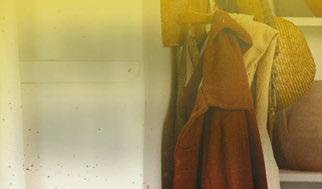
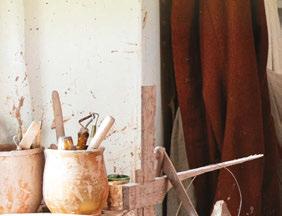




















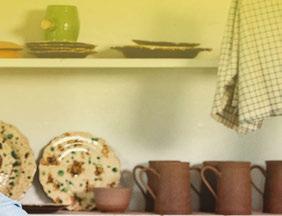






























A stroll down centuries-old sidewalks that lead to modern art galleries and shared moments that warm the heart.





Along shaded walkways once graced by history’s footsteps, inspiration still lingers. Here, timeless estates and centuries-old architecture stand alongside galleries alive with contemporary vision. Each turn blends past and present, inviting you to wander, wonder, and discover creativity throughout Winston-Salem’s enduring story.







North Carolina’s Music Hall of Fame is a very Old North State experience
by DAVID MENCONI
Upon entering the North Carolina Music Hall of Fame, it’s possible the first thing you notice won’t be music-related. That’s because the music hall shares space with the North Carolina Motorsports Hall of Fame, so racecars are on display. The joint facility is the Curb Museum for Music and Motorsports (named for benefactor Mike Curb) in Kannapolis.
“It’s actually very cool to have the racecars here,” says Veronica Cordle, executive director of the Music Hall of Fame since 2017. “When we first moved in here, I did wonder: How would this work? But it’s a beautiful combination. This area is so saturated with both music
and motorsports, it works perfectly.”
NASCAR’s roots go back to Prohibition-era moonshine runners. But our state’s musicians have made monumental contributions to American music. From Doc Watson to Nina Simone, John Coltrane and Earl Scruggs on down, there truly are enough genius-level artists to fill a music hall of fame.
You’ll find displays about all those artists at the hall. There are 132 inductees going back a century, from Roaring Twenties pre-bluegrass pioneer Charlie Poole up to present-day stars like country singer Luke Combs (who is going in this year).
“The number-one thing I hear from people who come is they’re just totally
floored because they cannot believe how much greatness comes from North Carolina,” says Cordle. “I never knew so and so was from here, they’ll say — Roberta Flack, Randy Travis and all the rest. It really is unbelievable.”
The North Carolina Music Hall of Fame originated in the 1990s in Thomasville, when a group of music fans started collecting memorabilia to display. Curb, a politician and longtime music-industry mogul (as well as leader of hit-making Christian pop band Mike Curb Congregation), got involved in 2008 and moved it to Kannapolis, where he owned a NASCAR racing team.
It was Curb’s idea to combine music

and motorsports in one building, and he is the operation’s major underwriter. According to Cordle, Curb provides between 60 and 70 percent of its funding (which is enough to make admission free).
It’s hard to pinpoint how many music halls of fame exist in America. Bob Santelli, who has had key roles at the Grammy Hall of Fame in Los Angeles and Seattle’s Experience Music Project, puts the number at about three dozen, from big institutions like the Country or Rock and Roll Hall of Fame down to modest momand-pop operations.
“State halls of fame have a tough time, because most of their visitors are going to be from within that state,” says Santelli, now founding executive director of the Bruce Springsteen Archives and Center for American Music at New Jersey’s Monmouth University. “But they are still great and necessary. Huge museums like the Rock and Roll Hall of Fame can’t tell all the stories or preserve all the history. That’s why the smaller halls of fame are valuable.”
While the pandemic shutdown took a toll, Cordle says the hall has seen its annual attendance double since then to around 6,000 a year — mostly from school groups coming for tours. Among the most
popular artifacts on display are a golden fiddle from Wilmington native Charlie Daniels, of “The Devil Went Down to Georgia” fame, and Grammy Awards on loan from Troutman-born Americana star Jim Lauderdale and Newton bluegrassfiddle legend Bobby Hicks.
An advisory board selects inductees from a running list of nearly 400 names, based on influence and artistry. Most but not all are native-born and the vast majority are recording artists, but the membership does include a few nonperformers like Motown Records executive (and Climax native) Clarence Avant. Membership has become coveted enough for Cordle to regularly get inquiries from musicians lobbying for induction.
“It’s a cool thing, very nice of them to think of our band as worthy of inducting alongside George Clinton, Maceo Parker, so many others,” says Hope Nicholls, whose alternative-rock band Fetchin’ Bones was inducted in 2023 (and did not lobby for it). “It’s a building full of cool things and we had a lot of fun curating our exhibit. We gave them so much stuff, costumes and instruments and handmade posters, crazy DIY things we did through the years.”
The latest class will be inducted in

October at the Mooresville Performing Arts Center, a class of six led by country hitmaker Combs. Also entering this year are cult-favorite roots rocker Dexter Romweber, country pedal-steel guitarist Clyde Mattocks, singer/songwriter David Childers, pioneering radio DJ Hattie “Chatty Hatty” Leeper and director/producer Robert Deaton.
This year’s ceremony will have to go a long way to top the hall’s most memorable induction, of platinum-selling country star Eric Church in 2015. The Granite Falls native wasn’t supposed to be there, sending relatives to accept on his behalf — but unexpectedly appeared after all.
“His mom was in the middle of reading Eric’s acceptance speech apologizing for not being there, when all of a sudden he walks onstage,” says Cordle. “Surprised everybody, and there was an amazing eruption from the audience. That was the best.”
THe North Carolina Music Hall of Fame is in the Curb Museum for Music and Motorsports, 600 Dale Earnhardt Boulevard, Kannapolis. Admission is free. For details on hours as well as tickets to the Oct. 16 induction ceremony, see northcarolinamusichalloffame.org or call 704-934-2320.
Mechanics know engines... but what about staging your home to sell?


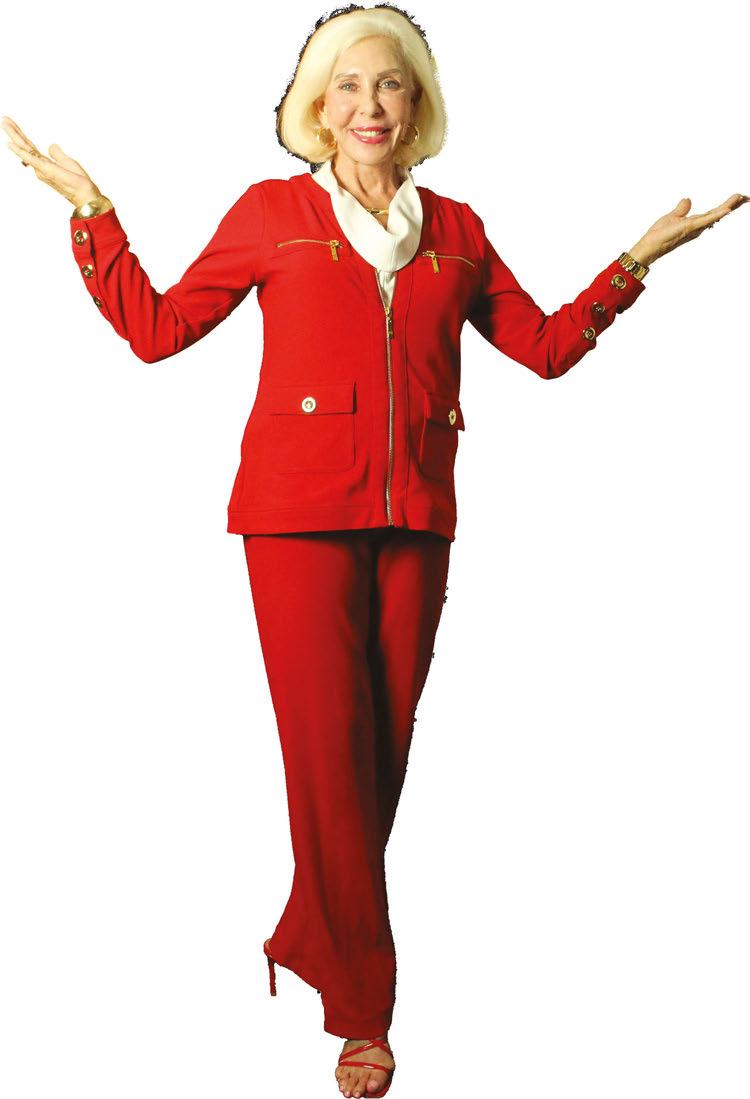
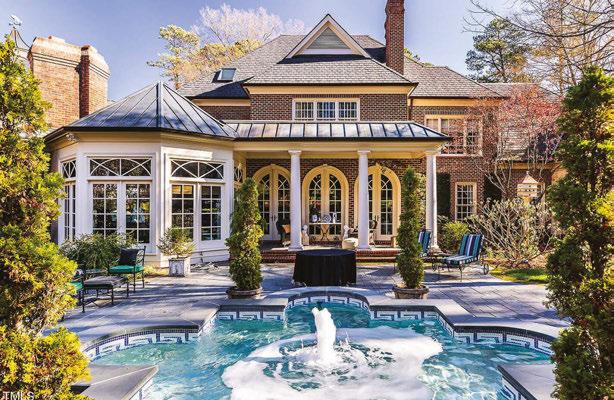
THis year, on Oct. 7, we will have a full moon, known as the Hunter’s Moon. Many full moon names date back to Native Americans, who used their cycles to keep track of the seasons. As the name might suggest, it is the time of year when folks traditionally prepare for the winter by hunting and gathering. While I won’t be out shooting anything, I’m certainly gathering a harvest from my garden. Cherish October! — Helen Yoest
Perennials like Joe-Pye weed, garden phlox and salvias benefit from a slight cutback this time of year. I trim them to about 6 to 8 inches of stalk, which leaves enough to remain a habitat for wildlife. While most of the cutback plant material can go in your compost pile, you’ll want to avoid putting in anything with diseased foliage. Instead, bag it, seal it and dispose of it in the trash.
If you love a kaleidoscope of colors in the spring, plant your bulbs now, before the first hard frost. Dutch tulips will put on an unmatched show but are not perennial in our area, so they must be planted annually. If you want more longevity for your efforts, consider perennials like hyacinths, daffodils and crocuses.

October is the ideal time to plant trees or shrubs — and you’ll find an abundant selection of Southern favorites such as jasmine, oaks and camellias at garden centers. You might also consider adding fruit-bearing plants like muscadine grapes, pawpaw or blueberry bushes: not only will you be rewarded with tasty treats come summer, you’ll also help the early-spring pollinators. Blueberries in particular make a great hedgerow, so if you are looking for privacy, they’re a delicious option.





by JOE MILLER

STURNIPSEED NATURE PRESERVE
There are two ways to approach this 265-acre preserve, which is part of the Marks Creek Watershed, named a Last Chance Landscape by Scenic America for being a gem of nature threatened by growth. The Hunt Valley Trail entrance is the more popular access, with open fields, picnic tables and the half-mile meadow loop trail. It’s an especially good option for families with small children who want to experience free play in nature.
ome of the best places to play outdoors in the Triangle are courtesy of Wake County. From the mountain bike trails at Harris Lake County Park to the boat rentals at Lake Crabtree County Park to the environmental education center at Blue Jay Point, the county has made play a priority — as have county residents, who have approved, by wide margins, four open-space bond issues since 2000 for $211 million.
But while you may be familiar with the county’s more developed parks — with a host of amenities from restrooms to paved parking to playgrounds — you may be less familiar with the county’s three nature preserves, all on the east side of the county. The preserves are more rustic in nature, with an emphasis on self-discovery rather than structured play. You park on gravel, you explore on natural surfaces, you take care of business in a porta-potty. But it means you can hike to a rock outcrop, paddle a swamp or, if you have one, ride a horse in these spaces — each a true departure from the day-to-day.
The Pleasants Road entrance, on the other hand, offers more of a wilderness getaway. Take the Gin Branch Creek Trail from the gravel parking lot and you’ll soon pick up the half-mile Lupine Loop, which circles an open meadow. Continue on the Gin Branch Creek Trail down to a wildlife observation deck above a marshy section of the creek where your patience (and quiet) may be rewarded with a beaver or otter sighting. Farther down the trail, the 1.7-mile Hidden Boulders Trail takes you to one of the last rock outcrops of the piedmont before it gives way to the coastal plain. It’s about 3.5 miles of hiking in all, but the Gin Branch Creek Trail continues to the Hunt Valley Trail portion of the park, where you can add another mile. 7100 Hunt Valley Trail, Wendell or 1505 Pleasants Road, Wendell; 8 a.m. to sunset, daily.

SANDY PINES NATURE PRESERVE
Though they’re little more than 6 miles apart, Sandy Pines and the Turnipseed Nature Preserve straddle different sides of the Piedmont/ Coastal Plain line. Sandy Pines’ 563 acres are Down East flat, making it ideal for a long hike or a run — or a canter! The preserve’s 6.5 miles of trail are open to equestrians and are a bit wider than a typical hiking trail. You can travel through open meadows, mixed hardwood-pine forests and, mostly, through pine woods. A bare canopy in winter makes this an especially good hike destination on a cold day.

The land was farmed until the early 2000s, so you’re likely to see signs of the land’s agricultural past, where cash crops were grown, livestock raised and timber harvested. The preserve has the basic equestrian accoutrements: pullthrough parking for trailers, mounting blocks, eye hooks for tying up horses, and more. (For hikers and runners unaccustomed to sharing the trail with horses, FYI: the proper protocol is to step to the side of the trail and let the horse pass.) 7201 Doc Proctor Road, Wendell; 8 a.m. to sunset, daily.


You might look at a map of the Robertson Millpond and think, How could you possibly find escape in that scrawny 85-acre swamp? Eastern North Carolina was once pocked with these small ponds, carved out of the woods and blocking the flow of creeks to power gristmills. When the gristmill shut down, nature returned with a vengeance to reclaim this former pond. The result: blackwater cypress-gum swamps that make great habitats for beavers, muskrats and a bevy of birds and fish. They also make for a great place for a paddler to become bliss-
fully disoriented and lost. But a heavily marked trail — there are 73 trail markers in just over a mile — aids the easily gone astray. You don’t even need your own boat to paddle here: kayaks are available for rent at certain times.
6333 Robertson Pond Road, Wendell; 8 a.m. to sunset, daily.
For more information on these preserves, visit wake.gov.
























Lift your spirits, raise a glass, and reimagine an autumn getaway with a coastal twist. Your island escape is only 2 hours away.




















Shape note singing is enjoying a revival in the Triangle, as the tradition finds a new audience by
SUSANNA KLINGENBERG
photography by TAYLOR MCDONALD
cross the Triangle, a few times a month, an eclectic group gathers: religious believers of all stripes and spiritual seekers, tweedy professor types and tattooed 20-somethings. They duck into coffee shops or church basements, greet one another warmly, deliver their dishes to the break table, and gear up for what they’ve come to do: sing Christian hymns together. At this unlikely gathering, there are no instruments and no microphones. Just lungs, hearts and the powerful pull of music.
This is shape note singing, a raw, spirited singing tradition with a growing appeal to young people disenchanted with the AI-ification of our world. It offers an oasis of analog togetherness in an increasingly virtual world. Sometimes called fasola or Sacred Harp singing, shape notes have deep roots in early American history. Originating in rural New England in the late 18th and early 19th centuries, the tradition was designed as “a populist way to learn to sing together in church for people who didn’t have the money to be classically trained,” explains Celia Lechtman, a shape note singer who regularly goes to meetups at Durham Friends Meeting House, Pullen Baptist and St. Mark’s Chapel in Mordecai (and who happens to have operatic training, too). Itinerant teachers would visit churches and teach the method, which quickly moved South and took hold in the Appalachians, where it remains popular today. But it’s also found
a fanbase far from its rural origins across the nation at urban community centers, college campuses and innovation hubs like the Triangle.
Instead of traditional notation, shape note music uses geometric shapes (triangle, square, oval, and diamond) to represent different pitches on the scale. The system was meant to democratize music. “I’ve never been in a space that’s as genuinely welcoming as shape note singing,” says Lechtman. “But that’s not because it’s become more inclusive — it’s because it was built that way from the ground up.”
Central to the local community is the Triangle Shape Note singers group, founded in the 1970s by Dr. Daniel Patterson, Kenan Professor Emeritus of English and Folklore at the University of North Carolina at Chapel Hill. Patterson, now 97, was shelving books at an undergraduate work study when he happened upon a shape note songbook that included tunes his grandmother sang in the 1870s. He xeroxed a few and tried singing them with his friends, a group that quickly grew, gained support and eventually became the Triangle Shape Note singers. This community of Triangle musicians — some trained, many not — gather monthly to sing from several shared songbooks: THe Shenandoah Harmony, THe Valley Pocket Harmonist and, most famously, THe Sacred Harp, a tune book first published in 1844. Its name is a reference to a singer’s voice.
But many singers don’t, and for them, it’s about singing for one another, making music in community.”
What draws people in 2025 to a singing style founded in the 1800s? Many singers appreciate that shape note singing frees them up to explore spiritual questions without the trappings of a church or religious tradition. “There’s a different kind of reverence here,” says Michael DeVito, a regular at Durham sings. “It has nothing to do with a 50-foot tall stained glass or a giant pipe organ and everything to do with being present together and singing.”
“A good voice in shape note singing is one that can hit the notes and sing loud.”
CELIA LECHTMAN
And while the songbook titles might suggest a sound that’s delicate or even sentimental, the music is anything but. Loud, direct and energetic, shape note singing was (and still is) meant to be in full voice, with singers arranged in a hollow square, one part on each side, each voice carrying its own weight.
“A good voice in shape note singing is one that can hit the notes and sing loud,” says Lechtman. “That perspective is so freeing, so bucket-filling. Singing is a thing we’re doing together, like an organism that I get to become part of.”
The sound of shape note singing might surprise you, not only because it’s loud (very loud) when sung in big groups, but also because the harmonies are not those we typically hear in Western music. Instead of thirds, it leans on fourths and fifths, with the tenor (rather than the soprano) carrying the melody.
“To my ears there’s a beautiful dissonance to the sound that makes it one of the truest representations of the human voice out there,” says David Brower, executive director of PineCone, the Piedmont Council of Traditional Music, which helps facilitate shape note singing in the Triangle. “We’re all surrounded by autotuned recordings and bombarded by AI-generated music. This is the exact opposite.”
For devotees, shape note singing isn’t about performance. It’s about participation. “We’re not a choir. There’s nothing performative about it,” says singer Kyle Johnston, associate director of the Moravian Music Foundation and committed shape note singer. “If you believe in God, then that’s your only audience.
For others, the draw is the lyrics.
“They explore the whole breadth of human experience: friendship, work, troubles and dying,” says Lechtman.
“There’s a lot of we. It’s about passing through the world together.”
Sometimes these groups of friends gather for conferences, such as the National Folk Conference, or for all-day sings, which draw enthusiasts from across the country. These gatherings often include a covered-dish dinner before people depart for smaller “house sings” in living rooms and backyards — a musical afterparty of sorts.
But across the board, people are drawn to the authentic community of shape note singing. Says DeVito, “As much as it’s a way to poke around at some kind of spiritual yearning or whatever, it’s also just fun to sing super loud and potluck with your friends.”









“The Elisabeth Speight Collection: A Daughter’s Tribute to Her Family’s Art” featuring paintings by Francis Speight, Sarah Blakeslee, Elisabeth Speight and Tudie Speight Oct 3rd – Nov 15th, 2025
“Wonder Women!” featuring Mid-Century Modernists Mary Anne K. Jenkins, Edith London and Anne Wall Thomas Nov 1st – Nov 29th, 2025
“A Life Well Lived” new paintings by Laura Lacambra Shubert Dec 4th – Jan 10th, 2026



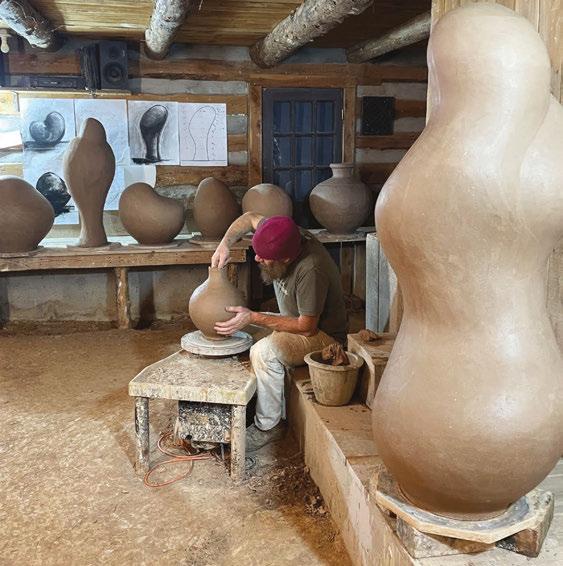
by LIZA ROBERTS
Celebrated Seagrove ceramic artist Daniel Johnston has always asked his work to carry a lot of weight. The clay vessels and pillars and bricks he forms and fires in Randolph County are beautiful; they’re also packed with a powerful purpose that has fueled his ambition for years. His works carry complicated stories about land, especially the place where he makes them and his life there. They’re dense with technical prowess, the multicultural lineage of that learning, and the demonstration of those skills. And they’re conceptual, freighted with ideas, wise to the history of art and its evolutions.
But lately, Johnston has begun making art differently. He’s thinking about it
differently. The catalyst has been his marriage to artist Kelsey Wiskirchen and the February birth of his first child, Joseph Elliott Johnston.
“There’s the feeling that I have a greater purpose in life as a father,” he says. “The work, I can see, has had a bit of a breath. In a way, if it had a life of its own, it would thank me for taking the pressure off of it a bit.” If his art no longer needs to prove his human worth, Johnston muses, perhaps it can begin to speak for itself: “It frees my work up to be more mature.”
At the moment, that new work is destined for a substantial fall installation at the Gerald Peters Gallery in Santa Fe, New Mexico. He plans to install his piec-
es there — as many as 50 large pots and several of the wall-hung clay brick assemblages he calls “block paintings” — in a series of rooms he’ll create out of 80-odd discarded wooden walls he salvaged from the High Point Furniture Market. Building environments for his work is not new for Johnston. “So much work that is impactful and changes people’s lives, it’s all content in context. The architecture of the room, it gives it context, and in a way it removes the pressure from that object. [The installation is] a bit of a Trojan horse, so that the viewer can softly let [the object] in,” he says. “If I can start controlling how you feel, then I’m able to allow you to see my work in the way I want to communicate it.”
Also on display within this context, possibly: previously unseen paintings made not of clay, but of paint on canvas or board. “This would be the first time I’ve ever exhibited paintings that weren’t three dimensional,” he says. His constructed wood-walled installation would be a good place to show them, he says, because they’d become part of a larger artistic immersion. “If you go into an installation, you are walking into an installation, you’re not walking into an exhibition of paintings.” Still, he’s not yet ready to commit. “Maybe I won’t exhibit them if I don’t feel they’re strong enough.”
Taking his time is par t of his practice. Abstracted, sketch-like paintings of vessel-shaped forms have shown up on his studio walls in recent years, but the paintings he may include in the Santa Fe installation are likely to be inspired by the landscape of New Mexico and the tobacco barns of North Carolina. Some will be painted on land he owns next to Carson National Forest in New Mexico, and some will be painted at home in Seagrove. “I’m absolutely in love, architecturally, with the tobacco barn,” he says. “It’s just such a brilliant piece of architecture.”
Johnston lives and works in a house and studio he built with his own hands. It reflects his long-held appreciation of the tall, timbered barns traditionally used to cure tobacco. It’s a log cabin the size of two barns put together, with big pots all around it, some sunken in the grass and some on pedestals.
It sits on 10 acres of land he bought at age 16 with money he’d originally saved for a Ford Mustang — land where, at that young age, he built himself a shack to live in, alone, after he dropped out of school. Years later he felled the trees to build this house and studio.
When I first met Johnston there seven years ago, he was humble as he told his story and surveyed his place. Growing up not far from here in extreme poverty as the child of tenant farmers, “in my mind,” he says, “land was power.” He told himself early on he would make for

“I’ve never thought of myself as a potter, and I don’t really like the title. I want to work with my mind, not my hands.”
DANIEL JOHNSTON
himself a different kind of fate.
The same could be said of his art.
About 15 years ago, after years of apprenticeship with potters in Thailand and England and with Seagrove’s internationally revered Mark Hewitt, Johnston became a leading American maker of big pots, famous for it. He perfected a technique to turn 100-pound lumps of clay into giant vessels that could hold 40 gallons apiece and made them in huge numbers, a series of 100 pots one time, 50 pots another. The acclaim was exciting, but then became disillusioning. It broke his heart to see them carted away, one by one. It was the groupings, he realized, that held the meaning: “People had to have a piece of it. As soon as they had that jar, it had no context.”
Johnston eschews that kind of work today. Now, he’s not concerned with demonstrating his finesse or with making beautiful objects unless they have conceptual meaning. At the North
Carolina Museum of Art in 2019, he sunk 183 individual wood-fired ceramic pillars in a permanent installation across the gentle hills of the park landscape to evoke an organic border, fence or outcropping. In 2021 at North Carolina State University’s Gregg Museum of Art & Design, he built a massive wire-mesh, house-shaped frame — a temporary building at once empty and full — to hold several giant pots, many irregularly shaped, and some put together like bricks in a foundation. It was a paradox: lonely but inhabited, open but caged, refined but deformed.
“I’ve never thought of myself as a potter, and I don’t really like the title. I want to work with my mind, not my hands,” he says. “Like Duchamp’s Fountain.” He’s referring to a porcelain urinal the French conceptual artist Marcel Duchamp exhibited in 1917, considered a seminal moment in 20th-century art. Duchamp rejected what he called “retinal” art, or art designed to please the eye, and wanted his art to provoke the mind instead. “I think about that a lot,” Johnston says.
Recently, caring for his newborn son and also for his aging father, who suffers from dementia, has allowed Johnston to spend more time in thought than his typical schedule of constant studio work allows.
“I’ve been working my mind, which is really probably the place that I spent the least time before he was born,” he says. “I can look back now and see that I had filled my time with things that kept me from using that bit of my brain. And so now it’s the opposite of it. I’ve had a huge amount of space to use that part of my brain.”
The result, he says, is the kind of artistic evolution that lies beyond the acquisition of skills. “The nice thing is that once you have the security of your skills and your abilities under your belt, there’s always a huge amount of room to improve. But so much of the work is mental and thought at that point. And so I have been working that way.”


What started as a local gathering over 30 years ago has turned into one of the top charity wine auctions in the country — and it’s all for a great cause: the Frankie Lemmon School & Developmental Center.
Every year on the first weekend in February, the Triangle Wine & Food Experience throws an unforgettable three-day celebration. World-class chefs, buzz-worthy restaurants, and top-tier wineries from around the globe come together for immersive dinners, exclusive tastings, and one legendary auction. It’s delicious, it’s dazzling, and it’s all about making a difference for the children and families of Frankie Lemmon.
Love local eats? Join a Community Wine Dinner! Your favorite Triangle chefs and restaurants paired with an incredible winery to deliver a unique culinary experience you won’t want to miss. For more info and tickets, visit www.frankielemmonfoundation.org/twfe/ or scan below!








A photo of MYB-77 in 1989. The author’s mom is holding their kittens, the author is holding the Siamese cat and her younger sister is in the brown dress. The man in the photo holding the dog is actually the mechanic — Dad was taking the picture.

taking the picture.
Remembering a family car that was the source of much consternation — and pride
by MANEESHA LASSITER
On his 80th birthday, I asked my father, “What happened to MYB77?” He paused, then took a bite of toast after dipping it in his daal soup. With a twinkle in his eye, he exclaimed, “Ahhhh, MYB, the evergreen car!” MYB-77 was our family car throughout my childhood in India. My dad was in the Indian air force, so we moved often: to Bangalore in the south, Pune in the west, Jodhpur in the northwest. Though it was a remnant of the British occupation, the car was prized by my father for its utility and uniqueness. The 1959 Standard 10 Companion was a blue-green British model car with a right-side steering wheel and manual gear drive. In her heyday, she must have been a beauty — but after 20-plus years, she showed her age, her color faded to a soft grey.
Everyone we knew called the car MYB77, as it was her license plate number. My father inherited the car sometime in the early 1980s, soon after his parents passed.
“Did you know MYB supported a lot of our family ceremonies?” Dad asked excitedly. “She helped us through all our big life events, from weddings to funerals. I had five brothers and two sisters, and they all agreed that I would be the best caregiver to maintain an old car.”
My memory of the car as a teenager was not the same as my father’s. I was very embarrassed to be seen in it. Our neighborhood friends nicknamed the car “Shikari Shambhu” after an Indian comic book character, a lazy and cowardly hunter who was always running away from dangerous animals. That’s pretty much how I felt. My sister and I often ducked down when
we were driving past friends, especially since MYB frequently embarrassed us by sputtering for fuel in their presence. Her boxy body, blaring headlights and toothless grin set her apart from all the air-conditioned, fast and sleek modern cars that other families seemed to have.
Dad wiped his mustache with a napkin and set his soup bowl aside. “You see, this present generation must understand one thing,” he said. “In those days, owning a car was an enormous deal.”
India got its freedom from the British in 1947. The British colonial rule was geared to benefit Britain and even decades later, many Indians were too poor to have the privilege of owning a car. Brand new, the Standard 10 Companion was marketed as a “farm car” with the ability to carry 180 dozen eggs or five very large milk
churns, along with a family of four.
My grandfather had studied economics at the University of Wisconsin in the U.S., back when a foreign education was exceedingly rare. After many years away from his family, he returned to India and got a respectable state government job with a good salary. “He decided to invest in a car so he could take vacations with his family, share the fruits of his achievements and atone for all his years away from them,” said my father.
After hearing Dad’s compassionate description, I offered a neutral response: “Well, she certainly held her own identity in any parking lot. ”
“But where do you get cars nowadays that can withstand the test of time?” Dad asked.
But did she? My memory was that the car was high-maintenance and hard to use, unattractive for most prospects. She’d often have trouble starting when we needed to go somewhere.
When MYB refused to start, I’d watch my father carefully check the connections as he replaced the battery in the car. If he turned the ignition key and the motor didn’t catch, he had to manually insert a crank rod through an access hole in the front bumper to turn the starter motor. That required him to swing his arm in a full 200-degree motion — sometimes up to six times — to get her going. If the crank didn’t work, he’d resort to pushing her to get her rolling, then shift her into gear to get her started. Most of the time it was my sister and I behind the car pushing — and that, too, was inevitably in front of our friends.
To top it all off, he had to connect two wires whenever he wanted to blow the horn. Ridiculous!
“What do you know about the mechanics of old cars?” he said. “She had her own personality! Though she was only 37 horsepower, she was built like a tank! When she was cheerful, she could easily cruise at 50 miles an hour on a flat road. But yes, when burdened, she slowed to 5 miles an hour. Like any person who has seen a lot in life, she could be a bit grumpy, but remember, she’d given de-
cades of loyal service to our family.”
Despite her quirks, Dad cherished MYB-77 as a royal antique and member of the family. Most often, she only responded to his care.
“Remember how many long road trips she remained faithful to us?” he asked.
I did remember one trip to Ramanagara, a vacation spot with a sericulture farm. We looked forward to our weekend getaway there, where we’d visit my aunt and escape the heat of the city. Our car was filled with songs and games — until we reached the foothills of the 2,451-foot-high main Ramanagara hill. MYB protested against her load, forcing us to redistribute our passenger weight. After the adults disembarked, she sighed in relief — but still needed
My sister and I often ducked down when we were driving past friends, especially since MYB frequently embarrassed us by sputtering for fuel in their presence.
an additional push from the villagers to start moving uphill.
Our family rallied with shouts of “Dum lagake haisha, jor lagake haisha!” — a Hindi phrase meaning, Put in your strength! Put in your breath, to put in your strength again! With everyone pushing the car, Dad shifted her into gear. She managed to climb the hill and finally parked proudly at my aunt’s house. After a couple of days of rest, she was ready to bring us home safely.
Over the years, MYB covered long distances as we relocated from one air force base to another. She carried our family of four, along with a dog and a cat, with care and reliability. She completed a 14-hour drive from Bangalore
to Pune. A few years later, she managed a 21-hour trip to my dad’s new base in Jodhpur, Rajasthan, covering nearly 2,000 kilometers through hills, sand and desert terrain. Once she took off, she was usually very sturdy. Her horn’s vitality was a measure of her mood, signaling her happiness (or not) during journeys. She served us for nearly 30 years.
I asked what happened to the car.
One year, my father said, we were making a long return trip home to Jodhpur after a family vacation. “You all had gone to sleep and were snoring,” said my father. “At one point I dozed off — for just a few seconds! — but MYB kept chugging and hissing her way up the road. She hit a deep pothole, which brought my attention back to the road, but you and everyone else, including the dog, kept snoozing.”
But MYB kept overheating, and halfway through the journey, the radiator hose burst. “We had to tow her back to our house, and our mechanic worked on her for days, but parts for such an old car were hard to find,” he said. “Sadly, he was unable to bring her back. She was too tired to continue.”
As he spoke more about the car, I could see him drifting back to those earlier days, perhaps remembering his youth, his time as a pilot and wing commander, and the pride he carried as a young father.
I finally asked him a question that had always puzzled me: “But why did you charge the battery inside the house?”
He wiped his eyebrow with his thumb and replied with a chuckle, “So no one could ever steal her!” We both laughed. We sat together quietly and finished our soup. It struck me that MYB-77 had been more than a car — she was my father’s companion through life. Like MYB, Dad carried our family through countless miles, never asking for much beyond a bit of care and patience.
His stories reminded me that everything and everyone has its time, even him. Through the power of humor and shared memories, I hope to find a graceful way forward though whatever unfolds in my parents’ coming years. I’ll take the wheel from here.




by JIM DODSON illustration by GERRY O’NEILL

My late mother liked to tell how, once upon a time, I loved to stand at the fence of the community-owned pasture behind our house in North Dallas, feeding prairie grass to a donkey named Oscar.
I was barely walking and talking.
“You weren’t much of a talker, but seemed to have a lot to say to Oscar, far more than to anyone else,” she would add with a laugh. “We always wondered what you two were talking about.”
Oscar’s kind, old face, in fact, is my first memory. Though I have no idea what “we” were talking about, I do have a pretty good hunch.
My mom also liked to tell me stories about growing up in the deep snows of Western Maryland, which sounded like something from a Hans Brinker tale,
fueling my hope to someday see the real stuff. Quite possibly, I was asking Oscar if it ever snowed in Texas.
I finally got my wish when we visited my mom’s wintery German clan for Christmas, days after a major snowstorm. It was love at first snowball fight with my crazy cousins. We spent that week sledding down Braddock Mountain and building an igloo in my Aunt Fanny’s backyard in LaVale. I hardly came indoors. I was in snowy heaven.
My mom took notice. “You’re such a kid of winter,” she told me. “Maybe someday you will live in snow country.”
Her lips to God’s ears.
Twenty years later, I moved to a forested hill on the coast of Maine where the snows were deep and winters long. My idea of the perfect winter day was a long
walk with the dogs through the forest after a big snowstorm, followed by supper near the fire and silly bedtime tales I made up about our woodland neighbors as I tucked my young ones into bed. On many arctic nights, I lugged a 50-pound bag of sorghum to a spot at the edge of the woods where a family of white-tailed deer and other residents of the forest gathered to feed. Tramping back to the house through knee-deep snow, I often paused to look up at the dazzling winter stars that never failed to make me glad I was alive.
Perhaps this explains why I love winter as much as my wife does summer.
The good news is that we find our meteorological balance come October, a month that provides the last vestiges of summer’s warmth even as it announces
the coming of winter with shorter days and sharply cooler afternoons. We share the pleasure of October’s many comforts.
As Wendy can confirm, her baking business ramps up dramatically in October as customers at the weekend farmers market clamor for her ginger scones, carrot cake and popular seasonal pies — pumpkin, pecan and especially roasted apple crumb — which typically sell out long before the market closes at noon. October marks the beginning of her busiest and happiest baking season. Meanwhile, back home in the garden, I will be joyfully cutting down the last of the wilted hydrangeas, cleaning out overgrown perennial beds, spreading mulch on young plants and already planning next summer’s garden adventures — that is, when I’m not raking up piles of fallen leaves, a timeless task I generally find rather pleasing — until the noise of industrial-strength leaf blowers fires up around the neighborhood.
Their infernal racket can shatter the peace of an October morn and make this aging English major resort to bad poetry, with apologies to Robert Frost:
I shall be telling this with a sigh / two roads diverged in a yellow wood / and I one weary gardener stood / and took the path less traveled by / with rake in hand and shake of fist / oh, how these blowers leave me pissed!
With the air conditioning shut off and the furnace yet to fire up, on the other hand, October brings with it the best time of the year to fling open bedroom windows and sleep like footsore pilgrims at journey’s end. At least our three dogs seem to think so. Our pricey, new, king-sized marital bed begins to feel like a crowded elevator on chilly October nights.
Among October’s other comforts are clearer skies, golden afternoon light and the first log fire of the season, celebrated by a wee dram with friends and thoughtful conversation that drifts well into the night until, the host falls asleep in his favorite chair. (That would be me.)
Ever ything from my mood to my golf game, in fact, improves with the arrival of October. And even though my interest in all sports seems to dim a little bit more with each passing year (and the worrying growth of online betting), the World Series and college football can still revive my waning boyhood attention on a brisk October weekend.
Halloween, of course, is the grand finale of October’s comforts. What’s scary is how much money Americans shell out annually on costumes, candy and creepy, inflated yard decorations (something like $11.6 billion last year, according to LendingTree), which suggests to me that being happily frightened by the sight of lighted ghouls on the lawn and kids who come in search of candy dressed as the walking dead is simply a welcome break from the daily horrors of cable news.
Our Halloween routine is one I cherish. Wendy’s elaborately decorated Halloween cookies disappear as fast as she can make them (I’m partially to blame, but who can resist biting the head off a screeching black cat or a delicious, bloody eyeball?). And I take special pleasure in carving a pair of large jack-o’-lanterns, one smiling, the other scowling, which I light at dusk on Halloween. Years ago, I used to camp on the front steps dressed as a friendly vampire — until I realized how scary I looked, with or without the makeup.
Now, the dogs and I simply enjoy handing out candy to the parade of pint-sized pirates and princesses and other creatively costumed kids who turn up on our doorstep.
The best thing about October’s final night is that it ushers in November, a month of remembrance that invariably makes me think of my late mother’s stories and a gentle donkey named Oscar.
Last year, my lovely mother-in-law passed away on All Souls Day, the morning after Halloween. Miss Jan was a beloved art teacher of preschool kids whose creativity and sparkling Irish laugh brought joy and inspiration to untold numbers of children — and me.
What a gift she left to the world.
Follow along and don’t miss a thing.













by MAUREEN SHERBONDY illustration by DANIEL HEADEN
Just yesterday we gathered in the patriarch’s living room reclining on cozy chairs and settees, conversing in guttural German while eyeing Viennese pastries and pungent cheeses. Between sips
of black coffee, the elders recalled that abandoned country, tongues roiled by politics, family, and loss. Now at the cemetery I hear their chatter. Banter lingers all around us.
Even after life, ghosts roam zones of kin proximity, in homes built of dirt and wood.
I place found stones on known graves while listening to friendly voices rising round this burial ground.

Montgomery and Will Choi design an airy, nature-forward home for their friends

Opposite

Back in the day — and still, in some rural areas — barns did more than just store hay and livestock. They doubled as gathering spaces for dances and parties, even meetings. “Barns are these cavernous buildings that connect to their surroundings in a specific way,” says architect Eliza Montgomery. She and her architect husband, Will Choi, are partners at MontgomeryChoi. They used the idea of a barn as a jumping-off point when they designed a home for their friends Chris Barr and Wilson Sayre, creating a space to gather, find synergy with their environment and enjoy their relationships. “We practice in a non-stylist way, what we care about is, what does this house want to achieve?” says Choi.
Sayre, a Raleigh native, oversees digital content at WUNC and Barr leads product development at a tech startup. After living in Miami (where they met) and then Chicago, the two were married in 2019 in Raleigh and decided to settle here. It happened that Montgomery and Choi had moved to the area from New York City around the same time (Montgomery had grown up here, as well). “We met at a mutual friend’s party and quickly connected over a shared love of culture and being in a similar phase of life,” says Choi.
Sayre and Barr had some land tucked in the woods off Lake Wheeler Road, and at a picnic in Dorothea Dix Park, the two couples got into a conversation about what a dream home would look like for Sayre and Barr, and a natural follow-up
question was whether MontgomeryChoi would design the house. At the time, they had completed some commercial and multi-family projects in the area, but no single-family homes.
The idea of working with friends was a little risky. “We thought, worst-case scenario, it would hurt our friendship, but I think deep down we knew that wouldn’t happen,” says Montgomery. Instead, Barr and Sayre got the best-case scenario: to have their home designed by architects with whom they already had a great relationship, who had a deep understanding of how they live. “They know how we act and flow and what we like,” says Wilson.
Sayre grew up in an industrial space surrounded by art and natural materials (her father is earthcast artist Thomas Sayre), while Barr is a devoted minimalist. “I wanted it to feel like a museum,” Barr says. But both agreed that they wanted to be able to entertain both large and small crowds, invite in tons of natural light and have unimpeded views of the surrounding woods. “It was an interesting challenge blending their aesthetic lenses,” says Choi.
Montgomery and Choi started designing the home in 2022 and finished building it in 2023. It’s done in a modular container style that mimics a rectangular barn, with a peaked roof and two sets of double sliding doors mirroring each other on the long ends. The exteriors are done in western red cedar, cement siding and black metal, while the interiors boast concrete floors

Opposite page: Built loosely on the idea of a barn, the home is done in a blend of industrial materials like cedar, metal and concrete. This page: The living area has two-storyhigh ceilings, with a skylight overhead. The couch, which is from IKEA, “has traveled all over with us and is still going,” says Sayre. They found the coffee table on Amazon and the swivel chairs at local mid-century shop Trig Modern.

Opposite page: The dining room table is from CB2 and the chairs are from Design Within Reach. The couple found the hutch in Chicago; it’s filled with pottery including pieces they made themselves, plus ones from makers like Mark Hewitt and Liz Kelly. This page: As for the powder oom, “this is where most of the color is,” laughs Barr. The tropical-print wallpaper from Milton & King is a nod to Miami, where the couple met. Felt pendant lights from Muuto Pendants in the kitchen help soften the acoustics.



Two collage pieces Barr made from historic photographs hang in his office. He found the desk on the side of the road and stripped it down to the bare wood to work in this space. The reading nook in their bedroom is decorated with a series of clay squares that were tests for the napkin holders they made for their wedding. They found the chair on auction at Leland Little in Hillsborough. The light is from Restoration Hardware and the side table is from Amazon. “I like looking at funky stuff and mixing it up,” says Sayre.



A bookshelf in Sayre and Barr’s bedroom doubles as a headboard. It’s made with extra pieces of cedar from the exterior of the house, blackened with fire as a nod to Shou Sugi Ban, a Japanese practice of charring wood. “We wanted to clad the entire house in it, but it’s way too expensive, so we did it for the headboard,” she says. The painting of the white house piece is by Amy Greenan, a friend of Barr’s; the bedside tables are made from beams salvaged from an old home nearby. The bedspread is from Quince and the sheets are from West Elm.

Clockwise from top: Barr and Sayre incorporated more playful elements, like terrrazzo tiles, in their son’s bathroom. A short set of stairs leads to a landing that serves as a television nook. “We wanted to make sure they had some comfortable, relaxing, more close-knit spaces up here,” says Choi. In their son’s room, they incorporated whimsical decor like free-form wall decals from Etsy and animal prints in squiggle frames, which Barr found online. Barr made the blue fox piece and the rug has been in Sayre’s family for several generations. Opposite page: Sadie Walters, Choi, Nick Neptune, Montgomery and Sayre, plus children, gather for an afternoon happy hour.


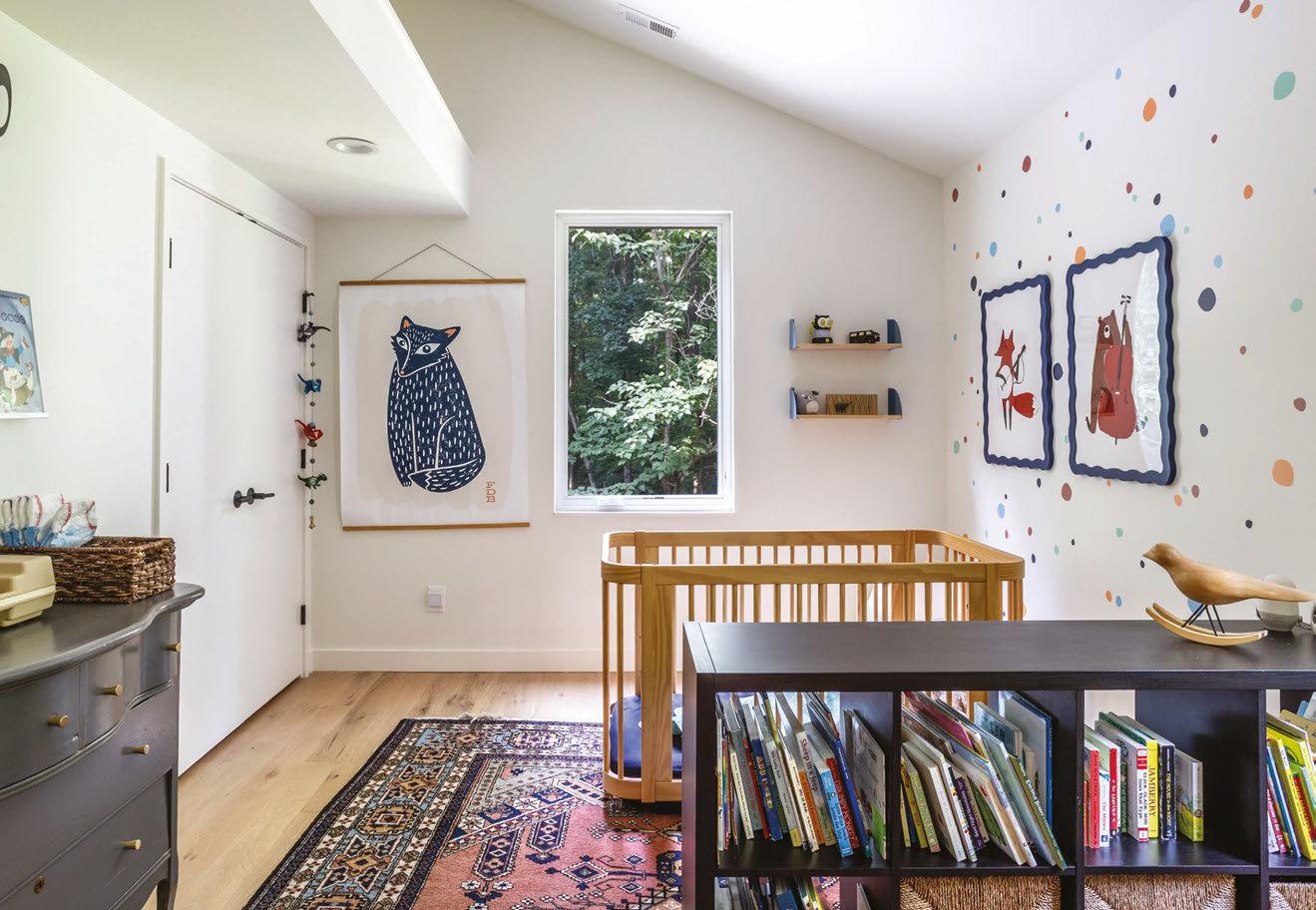

and countertops for a nod to Sayre’s more rustic, industrial preferences. “The floors are polished, but not so polished that you can’t see the speckles and aggregates,” says Choi.
Inside, the downstairs offers a seamless blend of indoors and out, featuring a mostly open floor plan, lots of windows and clean white walls. In the living area, double-height ceilings and a skylight pull in the sunshine, while the sliding doors allow for easy traffic flow and a crossbreeze. “We are so in love with the space and light,” Sayre says. True to Barr’s preference for a gallery feel in the home, the main living area is minimalist by design: few furnishings and a palette of greys, black and white serve as a canvas for windows that frame tulip poplar, oak and sycamores. “We didn’t want to do anything to take away from the views of the outside,” she says.
The ceiling is lower in the kitchen area, which gives it a more intimate feel. Black countertops and white cabinetry let the trees shine through the floor-to-ceiling windows on either side of the cooking area. “Black is actually a color in nature that allows you to disappear — shadows, mountains — it’s surprising,” says Choi. Agrees Montgomery: “It’s a way to make the architecture invisible.”
Just out of sight, down two short hallways, are some functional spaces, including a landing area with spots for shoes, hidden play storage for the couple’s young son, Barr’s office and a surprisingly colorful powder room finished in tropicalprint wallpaper.
Upstairs are the more private spaces, designed as two wings on either side of the home, connected by a bridge above the
living area. Barr and Sayre’s bedroom suite is on one end. It’s modest space with a bed facing the windows and a headboard that doubles as a bookshelf to divide the sleeping area and a reading nook. “I need a certain amount of coziness,” Sayre says. “I like spaces to curl up and read a book without feeling fully exposed.” A spacious closet, bathroom and laundry room are adjacent to their bedroom. “I’m a functional person, so I think about the flow of life — how do you move about your day, how do you all stay connected?” says Choi. “I wanted it to be single stream: you use the bathroom area, get dressed, toss your clothes in the laundry room… it’s an assembly line.”
On the other side of the second stor y are their son’s bedroom and bathroom, as well as a guest room. There’s also a loft-style television nook at the top of the stairs which holds their books, records and other tchotchkes within built-in shelves.
In this part of the house, there’s more art on the walls — some pieces the couple made themselves, others from travels and friends — plus softer furnishings and a little more color. Sayre tapped a friend in the home staging business to help them incorporate meaningful pieces without detracting from Montgomery and Choi’s minimlist design. Their son’s room, in particular, has playful wall decor and a colorful rug, plus a bookshelf filled with books of all hues.
Today, their home works just as they’d hoped: as an oasis that feels modern yet warm, open yet cozy — but most of all, a reflection of Barr and Sayre themselves. “And Eliza and Will get to come over and see us live in this space. It’s been so special,” says Sayre.


by HELEN
Nine years ago, Frances and Barrett Cain’s 2-acre plot in the Carries Reach area was a compacted lot with untilled dirt that once housed storage barns for an adjoining tobacco farm. The Cains weren’t gardeners when they lived in Northern Virginia before retiring to Raleigh, but you’d never know this from what they have accomplished — turning the barren land into an oasis of beautiful plantings on fertile soil. It was no easy task, Barrett jokingly says: “We have the pain and surgeries to prove it!”
As busy professionals, Frances and Barrett had little time for hobbies for much of their lives. Both worked for USAID in Washington, D.C., and Barrett also worked with the Small Business Administration and the Veterans Administration. Their dream, however, was to move to Raleigh to own land where they could build a garden.
Neither had much experience gardening; Frances grew a few flowers, Barrett took care of the lawn. “But my parents had an interest in horticulture, with Mom growing flowers and Dad growing roses,” Frances says. And during visits to her grandparents’ farm in Southampton, Virginia, Frances says, her grandmother, aunt and uncle would let her “playfully” work the rows of peanuts and tobacco.
rented a room at an extended living hotel in Fairfax for eight months, traveling to Raleigh weekly or biweekly to check on the building progress. Even with the storage unit, there were boxes all around.” (It was the first real test of their marriage, she half-jokes, since they’d been wed just two years before.)
Once they moved in, the Cains began working the land that would surround the house. “We found all sorts of tools and such from where the old tobacco barn disintegrated,” says Barrett. “There were gears, plow parts, ball joints, tin, barbed wire and old barn wood.”
“And there were so many rocks — big rocks — that had to be cleared, as well as roots,” add Frances, figuring that the rocks were used as edging for earlier garden beds.
bers. “We tried melons this year, but they require way too much space,” she adds, “and the figs really showed off this year, way more than we can eat!”
The Cains are environmentally conscious. “We don’t use any chemicals, and keep the garden as natural as possible,” Frances says. “And when I started the garden, native plants weren’t talked about like they are now. But I am working to incorporate more.” Barrett adds, “We have oodles of birds and other friendly wildlife.”
Today, they are reaping their rewards and sharing with others as they host garden tours and events with their church, First Baptist in Raleigh. “We talk a good game about enjoying the garden, but seldom get to do so on a regular basis,” says Frances. “Though we do have parties on the back porch, complete with table arrangements from the yard.”
“If you are new to gardening, don’t have grandiose garden plans, go forward with what you can do yourself.”
— FRANCES CAIN
In 2014, the Cains bought this property from Homes by Dickerson, a local custom builder, then worked with them to build their home. After purchasing the lot, Frances asked the builder, “Who owns the land next to us?”
Turns out, the builder also owned the lot next door, too — so Frances offered a quick follow-up: “Can we buy it?” The Cains were able to purchase the second lot, which was full of hardwood trees, and they left that land as it was.
With land already purchased in Raleigh, they listed their home in Fairfax, Virginia — but didn’t anticipate how quickly it would sell. “We had no choice but to find temporary housing,” says Frances. “We put most of their things in storage and
They amended the compacted soil with pine bark, homemade compost and humus compost, then added layers of plants to the new beds, with a goal of having something blooming each season, starting with Liriope along the bed edges. “Things are now growing into each other, the pruning seems nonstop!” says Frances.
While Frances designed the flower beds, Barrett tended to the lawn and the vegetables in the raised beds he had built. “We didn’t have grandiose garden plans, we just went forward with what we could do ourselves,” says Frances.
Together, they created walking paths throughout; they also grow in containers. “I have an herb garden with oregano, rosemary and thyme at the back kitchen door, where I can easily snip, snip, snip,” says Frances.
In the summer, they’ll grow squash, tomatoes, swiss chard, peppers and cucum-
In addition, they volunteer with the Raleigh chapter of International Focus, a nonpartisan nonprofit that promotes understanding between North Carolinians and the international community. So far, they’ve hosted five groups, including parliamentarian members, judges and attorneys from Moldova and a group from Serbia.
Frances has also gotten involved with the gardening community. She’s the past president of the Raleigh Garden Club and currently serves as the third vice president of the Garden Club of North Carolina. “Frances is a true pioneer and trailblazer, making history as the first African American officer in the Garden Club of North Carolina,” says Charles McLendon, president of the Garden Club of NC. “She is a joy to work with and her service inspires and uplifts us all.”
When their blended family of eight children visited, they gave the garden a name: Cain’s Park. It’s fitting for all they have accomplished. “We enjoy seeing the results of our gardening chores,” says Frances.

This and opposite page: The Cains have worked their garden to include walking paths through different areas and raised garden beds for growing fruits, vegetables and herbs.
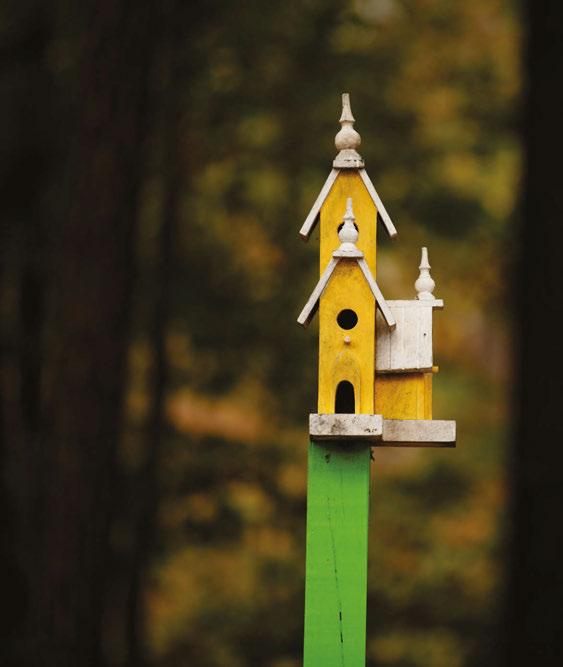










Family pieces and a tight color scheme come together inside a Historic Oakwood home
by AYN-MONIQUE KLAHRE photography by ABIGAIL JACKSON
When Robert Fields and Sallie Thompson bought this Historic Oakwood house, it was a homecoming of sorts. Both had grown up in the area — Fields in Raleigh, Thompson in Wake Forest — and went to Wake Forest University. They lived in New York City for a few years before coming back to Raleigh during the pandemic, first settling in a townhouse just outside of the neighborhood. “It felt like this tucked-away area with access to everything,” says Thompson. But the townhouse wasn’t quite right, so they sold most of their furnishings and traveled for a few months before returning to find a sweet Victorian-era house on Elm Street for sale.
The home had some interesting
architectural starting points, including high ceilings and a spacious single-floor layout, with a decorative arch in the front hallway that created a vestibule just inside the front door. But the house had also been divided at one point to accommodate an apartment, and it had been unoccupied for a few years, so it needed a little TLC. “We didn’t do much re-arranging — most construction was to get it back to the original footprint — but we touched every single room,” says Fields.
As they got ready to make decorative decisions, they enlisted designer Johanna Lyle of Jo Lyle & Co., with whom they’d gone to college and had come to follow on Instagram. (Incidentally, Lyle was living and working in Chicago at the time, but has since moved to Raleigh.) “She has a great sense of how to maintain the
character of a home but not make it feel dated,” Thompson says.
A big starting point for the home was the wallpaper in the front hallway, a contemporary design that felt evocative of Victorian-era prints. When Lyle first showed them the thistle-print pattern, it felt like kismet: they’d spend much of their time traveling in Scotland, where the flower is abundant. It makes a statement within the vestibule, and also served as a “cheat code” for the scheme throughout, says Lyle. All the colors in the home (butter yellow, rusty red, earthy green) have “references and callbacks” to other rooms, says Thompson. The red of the fireplace in the dining area is the same shade as the walls in the office, for example, and the green detailing in the living room is the wall paint in the
main hallway. “Working those colors throughout makes the house feel cohesive,” says Lyle. She also repeated floral elements throughout, particularly in the lighting. In the living room, there’s a branchy chandelier, the dining room has a pendant with a scalloped edge and the bedroom fixture has petal-shaped shades that make it look like a giant flower.
As they were decorating, Fields’ grandfather moved into a retirement community, and much of the furniture from his grandparents’ former home was up for grabs. “We’re both the youngest in our families, so all of our siblings and cousins had already furnished their homes. We ended up with a truckload of antiques,” says Fields. “Jo went through a mountain of wood furniture and pulled at least a half dozen pieces for the house.”
Fields’ late grandmother had been into antiquing and even ran an antique shop for a little bit, so he already knew there were several nice pieces, like the dining set, that would find their way into their home. Others he’d see in the new arrangement, like the secretary in the front hallway, and be surprised to learn it was a family piece. “Jo was able to see what would work and give these pieces a new life, and to balance them with more modern pieces,” says Thompson.
Fields’ grandmother was also a painter and collector of art, so they incorporated some of her pieces throughout, including a piece by one of the now-famous Florida Highwaymen, a group of Black artists who sold oil paintings along the side of the road in the 1950s. “The amount of detail is incredible,” says Fields.
A final touch came through paint. Lyle commissioned Erica Ashley of Made You Look Murals to add detailing throughout the living room. “We felt like this room needed some extra architectural pizazz in keeping with its more casual, folksy identity,” says Lyle. So Ashley painted a stencil-style border along the edges of the room and around the molding, riffing off the fretwork on the front porch and the feather motif in the chandelier medallion. “It’s my favorite part of the room,” says Thompson. “It adds a little flourish, but it’s still playful.”
This page: “To make the space feel historical, but not old, we mixed pieces consistent with the home’s era, like the secretary, with contemporary ones,” Lyle says. Opposite page: Since there’s not an island in the kitchen, a small cafe table offers a space to sit and have a coffee or chat during food prep. Opposite the living room, the study has rusty red walls “that give the space its own kind of identity,” says Fields.




The dining set is a piece from Fields’ grandparents. Lyle had the chairs recovered and paired it with blockprint floral curtains. “We repeated the same colors with different patterns and textures for a cozy, layered feeling,” Lyle says. The painting over the fireplace came from Fields’ family, too. “My mom dropped off half a dozen paintings on the back porch, and Jo picked out a few that just worked,” he says.


Clockwise from top: The walls in the bedroom are covered in a basketweave print. “The small scale gives it a sense of texture,” Lyle says. A flower-shaped pendant adds whimsy and sheer balloon valances add softness and hide the blackout shade. Nearby, the “snug room,” as the couple calls it, is “probably where we spend most nights,” says Thompson. The tile in the primary bathroom repeats the soft greens.




In the snug room, Lyle wallpapered both the walls and the ceiling.
“It was an architecturally boring space, so adding different patterns gave it a sense of depth,” Lyle says. The space includes a projector and screen (hidden in the ceiling) for watching shows. “It’s the perfect spot to read or listen to records, too,” says Fields. The writing desk, from his family, is a favorite piece.
Artist Michele Yellin reveals herself through multilayered paintings

by COLONY LITTLE photography by JOSHUA STEADMAN


When it comes to painting, Michele Yellin believes that the messier, the better. She festoons her canvases with drips and brush splatters of acrylic paint, a form of expression that can become the finished work for some creators. But for Yellin, the mess is just the beginning. “I use it as underpainting,” she says. “It gives me some ideas of where to go.”
Yellin creates representational works that are inspired by these abstract underpaintings. It’s a process the artist has honed during the last 20 years, with final pieces that often depict landscapes and encounters with nature. The subjects of her paintings range from forest animals
to loosely rendered homes surrounded by colorful patches of geometric shapes that form hillsides or cliffs.
Yellin has called the Triangle home since the mid-1980s. She obtained her BFA in studio art at the University of North Carolina at Chapel Hill and later moved to Cary, where she raised her family. She developed her painting practice first through using watercolor and ink on paper in her home studio.
For a long time, Yellin exhibited work in group shows and sold her work through the Hillsborough Gallery of Arts, making art while she could during two decades of raising children, caring for ailing parents and tending to a divorce. The years of caregiving left her craving additional inspiration to expand
her practice, so in 2018 she started working in a studio at Artspace. “I needed an environment where I could connect with other artists,” she says. “As far as inspiration goes, looking at other artists’ work is at the top of my list. How did they do that? What are they doing there? Why does that look so great?” She also shares a home studio in Chapel Hill with her friend and roommate, the artist Jane Filer.
Within Yellin’s own work, layers of color, texture and shape form the foundation of each painting. Her process begins with priming the canvas, covering it with a coat of acrylic gel. From there, she begins to build color onto the canvas in bold swaths, using a variety of tools including standard paint brushes, paint rollers and printmaking brayers. Often,




“When I paint a piece, I want to make something beautiful that makes me happy and hopefully resonates with others.”
— MICHELE YELLIN
the underlayers include handwritten prose. She’ll also use less conventional tools — like stencils or bubble wrap — to leave subtle marks that create depth and texture. “The underpainting adds more interest and activates the surface,” she says. “It gives me some ideas of where to go.”
Usually Yellin will create five or six layers of this underpainting before she begins the figurative elements of the work. She uses vine charcoal sticks or white chalk to begin to tease out shapes, transforming the canvas from an abstract expression into a representational painting. This is where some of her most difficult work, the slow looking, takes place. “I don’t plan it,” she says. “I’ll paint the underpainting, then just sit here and stare at it.”
Yellin likens her process to gazing at clouds in the sky and watching forms emerge. “If I stare at it and nothing comes up, I’ll add more to the underpainting until it starts developing into something,” she says. Once a vision emerges, Yellin will begin to fill out her outlines using a paint shaper, an object with a wedge-shaped silicone tip that resembles a paintbrush. “It’s one of my favorite tools,” she says. Using the shaper, Yellin creates the sharp edges and lines that form strong blocks of color on her canvas.
In her studio, one work in process is a commission for Habitat for Humanity featuring five homes perched on top of a series of rolling hills. While creating the underpainting, Yellin had inscribed her thoughts on the concept of “home.” As
she created the piece, fleshing out a blue sky, green hills and trees within an inviting palette of cozy fall colors, she noticed that elements of the underpainting resembled a colorful patchwork pattern. She left that portion of the underpainting intact, a nod to the organization’s practice of gifting quilts to new homeowners. “When I paint a piece, I want to make something beautiful that makes me happy and hopefully resonates with others,” she says.
Homes are a repeated motif in Yellin’s work. “When I was a kid, my dad worked for IBM, and we moved quite a bit,” she says. Until she was 6 years old, her family lived in an 1820s farmhouse in Hudson Valley, an area in rural New York, and she still has vivid memories of the home.

“It was in the woods, with a pond and a dirt road,” she says. “We had a little attic that was painted yellow and there was a window; it felt magical. The house felt warm and safe.” Many of her works feature homes inspired by these memories: two-story houses with pitched roofs and a glow from the windows. In many paintings, a figure waits at the front door, as if they are anticipating the arrival of a visitor.
At any given time Yellin will have multiple canvases in her studio in various states of completion; this gives her some flexibility as she attempts to find order within the chaos of the underpaintings. She credits this intuitive approach to painting to Filer, who taught at the Carr-
boro Art Center for over 20 years.
Yellin recalls taking a class with her during a time when she was under a lot of personal stress. “I was in one of her workshops when Jane told me, just make a mess on your canvas, look at it and see if you can see something in it — don’t try to solve the whole thing at once,” she says.
Yellin now shares that piece of advice — to not try to figure it all out at once — with anyone who feels stuck or overwhelmed in their work, including the students she teaches at summer camp at Artspace. “I think that applies to life, too: You may know where you want to go, but you don’t know what it’s going to look like. So just take the next step,” she says. “In the middle of every painting —
when it’s a disaster and I think I don’t know how to paint — I just keep going. And when it’s complete, I wonder, How did this happen?”
“Michele has a strong creative light guiding her,” says Filer. “She leads with her heart. Sharing a home and studio with her perpetuates an artistic synergy which is an experience both happily shared and extremely contagious.”
And how does she know when a piece is finally complete? Again, Yellin credits Filer for more words of wisdom. “A phrase that I learned from Jane is, you’ve got to love every square inch,” says Yellin. “I’ll put a painting on an easel and ask, Do I love every little bit of it? If the answer is yes, then it’s done.”





WALTER’s roundup of gatherings, celebrations, fundraisers and more around Raleigh
On Sept. 5, WALTER hosted WINnovation at The Umstead Hotel & Spa. This annual event gathers women leaders in our community to share talks about their experiences over dinner. Held in partnership with Bank of America and with Diamonds Direct as our supporting sponsor, this year’s lineup included Sara Abernethy, co-founder of Wye Hill Hospitality; Dallas Bonavita, executive director of Note in the Pocket; Pamela Cashwell, secretary of the North Carolina Division of Natural and Cultural Resources; and Carly Jones, President & CEO of Artspace.





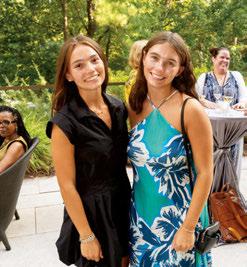








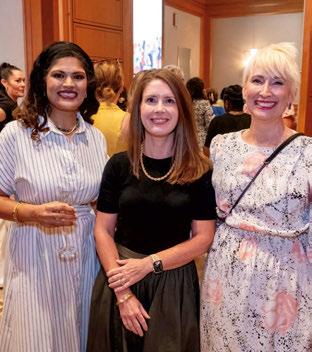


On July 20, residents of The Circle neighborhood came together for book readings by the six authors who live on the street. Authors included Kepler Knott, Anne McLaughlin, Victoria Bell, Elizabeth Jackson, Michael Dayton and Bryan Bell. The Bells hosted the event in the new addition of their 1926 home. The Circle is almost 100 years old with a diverse collection of historic houses.









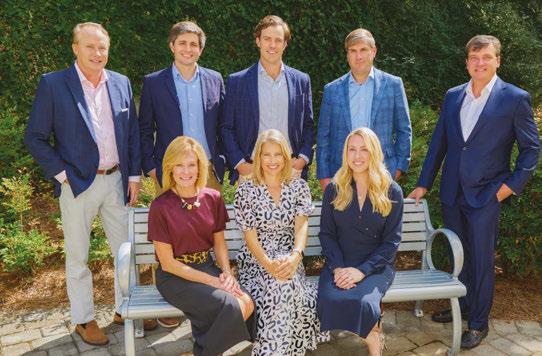


HAYES BARTON PLACE GRAND OPENING
Hayes Barton Place proudly celebrated its grand opening on May 1 with a Great Gatsby themed ribbon-cutting ceremony. Guests were transported back to the Roaring Twenties with sparkling decor, lively jazz and vintage flair. The ribbon was cut to enthusiastic applause, symbolizing the official debut of the new Life Plan community.








Plan your next getaway with NC Weekend. This season, we’ll take you to the best destinations across the state, from scenic spots in western North Carolina welcoming back visitors after Helene to good eats and coastal retreats. Time to get ready: the road is calling!
New season premieres October 2.
LIBBY BUCK BOOK LAUNCH
Friends gathered at the home of Marjorie Hodges and Carlton Midyette to celebrate Libby Buck’s first novel, Port Anna, published by Simon & Schuster. Buck earned a PhD in art history from the University of North Carolina at Chapel Hill and lives in Chapel Hill. The author’s Triangle area book club joined the reception and book signing event.


































































































State of Downtown presented by PNC is Downtown Raleigh Alliance’s annual meeting that brings together 500-plus community stakeholders with a shared passion for seeing downtown Raleigh thrive. DRA presented key insights and data from the State of Downtown Report and invited local experts to share their perspectives through panels and presentations.












On Aug. 25, Mariella and Nathan Favors presented First Lady Anna Stein with a bowl that they made at their studio in Bakersville. The two are outstanding artists: he, a wood turner, and she, a gem expert. The bowl they presented was made from North Carolina wood with stones indigenous to our state.

LevityLifts, a plastic and advanced cosmetic surgery practice, officially opened its doors in Raleigh on Aug. 27 with an intimate grand opening ceremony. The new office reflects Dr. Heather Levites’ vision for a welcoming, elevated patient experience. The practice, which is led by an all-women team, features a surgical suite with two operating rooms and a recovery area, five exam rooms and a private waiting room for the family of patients in surgery.








On Sept. 3, Cary Mayor Harold Weinbrecht kicked off the Fine Arts League of Cary’s annual Art Swarm event with a party that featured plein air painting, studio painting, hands-on workshops and community art projects. FALC also opened its new gallery and multi-resource arts center in the historic Waldo House, which is adjacent to and supported by the Mayton Inn.






OPENING RECEPTION FOR “PICASSO: ORIGINAL STONE LITHOGRAPHS”
On Aug. 1, Gallery C hosted the opening reception for “PICASSO: Original Stone Lithographs from La Comédie Humaine.” It was a highly anticipated opening and very successful.





« October 23, 6:00 pm: Haunted Vintage Game Night « October 26, 2:00 pm: Come Sunday Jazz: Brandon Mitchell
Also this month at Weymouth Center:
Oct. 2 - Nov. 1:
October 2:
October 3:
October 9:
October 18:
October 21:
October 28:
November 1:
Spirited Stories: Tales from the Writers Self Guided Tour
A Novel Approach to History; Unveiling the Unseen
Meet the Author: Rylee Hayes
Meet the Author: Ed Southern One Wonderful Night
James Boyd Book Club: The Returned by Jason Mott
Song Circle Jam Session
Open House and Self Guided Tour


Scan the QR code for tickets and additional information!
555 East Connecticut Avenue, Southern Pines, NC
As the next phase of renovation begins at the NC Museum of History, community input and interaction is at the forefront
by AYN-MONIQUE KLAHRE
If you’ve driven around downtown lately, you’ve probably noticed the fencing around the North Carolina History Museum building. The site has been closed for a year, so this more visible phase of its renovation has gotten locals asking what’s been going on, says C.J. Roberts, the executive director of the North Carolina Division of State History Museums. “We’ve been moving more than 150,000 artifacts, from the size of a pottery shard to an airplane!” he says. “It’s a Herculean task. Imagine packing your grandmother’s china — times 150,000.”
The museum recently released plans for the renovated museum, which will reorient the entrance toward the north side of Bicentennial Plaza, create a light-filled atrium and add classrooms and community spaces (in addition to doing infrastructure improvements to update accessibility, install new climate-control systems and repair leaks). From the outside point of view, the 1994 building will have bigger windows to tease what’s inside, plus wood cladding and other updated architectural details.
“The museum was sort of stopped in time,” says Roberts. “Today, there are 4 million more people in the state.” Over the last 30-plus years, he notes, North Carolina has become more diverse and the museum has continued to acquire artifacts, so part of the effort is interviewing communities around the state. “We want to tell a fuller story,” says Roberts. “We want to make sure we offer maximum value and relevance to residents of North Carolina.”
When the museum reopens, it will


have many new features that guests have come to expect, like more digital displays and hands-on experiences. “It used to be that the focus was all on the galleries — and that’s still a huge part of what we do — but so much of our work now is in developing educational programs and digital content, so we’re finding we need things like more studio space,” Roberts says. “The mission doesn’t stop within the walls.”
To that end, Roberts wants to remind folks that while the building is
not open, the museum is still hard at work. “Our education staff is as busy as they’ve ever been!” he says, nodding to efforts to work on a video series in advance of the 250th anniversary of the founding of the United States of America next year, as well as ongoing workshops, lectures and acquisition of new material.
“This project has been years in the making. We want to modernize the building for today — and future-proof it for tomorrow,” says Roberts.

Your Family. Our Team.
The diagnosis is cancer. You’re scared. You feel alone. But you’re not. You have your family. Your friends. Their love. Their support. And, along with each other, you have us. An experienced, talented, multidisciplinary team armed with highly advanced treatment options and a “your cancer is our cancer” confidence that says we’ve got this. Instead of alone, you feel stronger than ever. To learn more, visit us online. We believe you’ll agree, together, we make a great team.

wakemed.org/cure